
SPECIAL
REPORTS:
Shopper Loyalty Perceptions (In collaboration with CVS Media Exchange)
Retail Media Reality Check (In collaboration with Goodway Group)




SPECIAL
Shopper Loyalty Perceptions (In collaboration with CVS Media Exchange)
Retail Media Reality Check (In collaboration with Goodway Group)







With in-house expertise in design and manufacturing, we bring your vision to life and transform an average shopping day into a memorable experience. Our innovative approach adapts to changing markets and shoppers’ needs with transformational displays from temporary to permanent.



Get to know P2PI’s Retail Media Award 2024 winners. These 25 executives are not only making an impact at their respective companies, but pushing the retail media space forward.

Our proprietary research examines what is currently driving shopper loyalty and how brands and retailers can adapt to attract and retain consumers as loyal, long-term clients. In collaboration with CVS Media Exchange.

This exclusive research provides insights on how commerce marketers are approaching future investments, their retail media mix, measurement and much more. In collaboration with Goodway Group.



Lianna


This summer has been a whirlwind of events for commerce marketers — from the Cannes Lions International Festival of Creativity to our very own Retail Media Summit in Chicago. There are countless recaps out there trying to summarize the main highlights and learnings from these conferences, and while I appreciate a good list of bullet points, I think the larger takeaway is actually much simpler. Having had hundreds (and this is no exaggeration) of conversations with the industry’s leading minds this summer, the resounding theme I’m walking away with is that true collaboration is the unlock to success for the next era of commerce.
Now when I say collaboration, I mean this in a few different ways, specifically when it comes to retail media and the booming landscape that continues to evolve at a dizzying pace. First, there is a dire need for more collaboration across teams at both retailers and CPG brands. The pace of acceleration in retail media cannot be maintained without companies reimagining what organizational mapping looks like, incentivizing teams to plan together and aligning roles in such a way that allows for truly omnichannel execution. Investment, measurement and growth all depend on this. But no one seems to have cracked the code quite yet. More and more brands are coming to us and asking how they can best restructure their teams, and so there’s an overarching need for cross-collaboration across the industry to set forth best practices for all marketers, despite competitive lines (after all, a rising tide lifts all boats).
Second, collaboration is needed for better transparency between retailers and brands, as measurement and data remain paramount in retail media. With more options than ever for retail media ad spend, those retailers that work hardest to be the most collaborative will come out at the top. Prioritizing co-collaboration is one of the themes behind P2PI’s new event Storefronts (visit P2PIstorefronts.com for more info), which will debut Sept. 12 in Chicago. Paving the way for innovative partnerships and strategies for the year ahead, Storefronts will give CPG brands and commerce marketers an opportunity to learn what’s in store for in-store retail media in the coming year directly from U.S. retailer media networks.
And last, when it comes to collaborating, it’s time to think globally. We’re operating in an increasingly global ecosystem, and the opportunities to learn from leading retailers and brands across borders offers marketers a unique chance to expand their knowledge and consider how new learnings might be adapted to their own markets to stay ahead of the curve. At numerous dinner tables, during panel discussions and even over a casual coffee, I heard over and over again how much this global perspective was beneficial to marketers.
So P2PI’s international efforts are not slowing down as we seek new ways to support our audience’s needs. On P2PI.com alone, we have added hundreds of in-store and digital images from top Canadian and British retailers. Our new Retailer Media Network Advisory Board includes leading retailers around the world, and our RMS events roster will continue to grow abroad — Retail Media Summit UK returns to London on Oct. 16, with plans for Canada again in 2025, and a few other markets currently in the works for next year. Additionally, we’re growing our membership options internationally and are launching new retailer profi les in the U.K. and Canada every month.
So, walking away from June 2024, collaboration is the main takeaway I won’t forget from this summer’s conference circuit. (I also won’t forget the disaster that was the line to get into The Chainsmokers concert at Cannes — #askjeeves, IYKYK — but that’s a story for another time.) I can’t wait to see where collaboration takes us in the second half of the year!

JESSIE DOWD, Editorial Director
8550 W. Bryn Mawr Ave., Suite 225, Chicago, IL 60631 877.687.7321 www.p2pi.com
BRAND MANAGEMENT
Senior Vice President, Brand Director Eric Savitch esavitch@ensembleiq.com
EDITORIAL
Editorial Director Jessie Dowd jdowd@ensembleiq.com
Executive Editor Tim Binder tbinder@ensembleiq.com
Managing Editor Charlie Menchaca cmenchaca@ensembleiq.com
Digital Editor Jacqueline Barba jbarba@ensembleiq.com
Managing Editor, Member Content Cyndi Loza cloza@ensembleiq.com
Editor, Member Content Heidi Bitsoli hbitsoli@ensembleiq.com
Director, Events Content and Strategic Engagement Lori Pugh lpugh@ensembleiq.com
Contributing Writers Michael Applebaum, Ed Finkel, Erika Flynn, Jenny Rebholz, Bill Schober
ADVERTISING SALES & BUSINESS
Associate Director, Brand Partnerships Arlene Schusteff 847.533.2697, aschusteff@ensembleiq.com
Regional Sales Manager Orlando Llerandi 678.591.8284, ollerandi@ensembleiq.com
MEMBER DEVELOPMENT
Director of Retail Patrycja Malinowska pmalinowska@ensembleiq.com
Sr. Director, Membership Development Nicole Mitchell 203.434.5733, nmitchell@ensembleiq.com
Membership Experience Manager Ann Estey aestey@ensembleiq.com
Manager, Membership Development Brady O’Brien bobrien@ensembleiq.com
Membership Experience Manager Heather Kurtik 724.553.0093, hkurtik@ensembleiq.com
Art Director Catalina Gonzalez Carrasco cgonzalezcarrasco@ensembleiq.com
Production Director Michael Kimpton mkimpton@ensembleiq.com
Marketing Manager Mackenzie Fennell mfennell@ensembleiq.com
SUBSCRIPTION SERVICES
List Rental mbriganti@anteriad.com
Subscription Questions contact@pathtopurchase.com
Chief Executive Officer Jennifer Litterick
Chief Financial Officer Jane Volland
Chief People Officer Ann Jadown
Chief Strategy Officer Joe Territo
Chief Operating Officer Derek Estey

NATE HAYDEN Senior Director of Customer Marketing Blount Fine Foods
Main job responsibilities: Leading our team to drive best-in-class promotion activity at shelf, driving insights and strategies to our customers though our sales team, and leading our media planning, consumer activation and content charge.
How you win with shoppers during uncertain economic times: Value, quality and assortment. Not just in flavor assortment, but also in size and price point.
New marketing tactic that you use: I can’t give away all of our secrets, but I get asked many times, “Why don’t you always do what all the brands are doing?” Well, that’s your answer. It really comes down to being authentic and meeting consumers where they are throughout their shopping journey.
Best career advice you’ve received: There’s so many things to pick from for this. Bob Sewall, Blount’s head of sales, reminds us of one quote all the time: “You get what you inspect, not what you expect.” That’s a mantra that can drive a lot of activity and insights forward.
Memorable aha moment in your career: Listen to consumers’ wants and needs. What they are telling you isn’t always right on the surface, so you might have to dig. Figure out the “why” behind it and leverage it. There are a few times this has surprised me or driven that aha moment. When a new item followed those wants, the sales and basket data came back proving it all matched our consumer learnings.
What you are reading or watching right now: With a toddler at home, there’s been a lot of “Sesame Street” and a lot less reading lately. I’ll also watch any good hockey game.
Summer travel plans: In New England, everyone’s coming this way for the beaches and perfect summertime weather. So, I’m not going anywhere other than enjoying the local paradise, beaches and seafood with family and friends — until it gets cold.

CHRISTOPHER CUBBA Chief Revenue Officer Snipp
Main job responsibilities: I build highperforming sales and client management teams. I also develop company revenue goals, objectives and performance expectations.
How you win with shoppers during uncertain economic times: Our clients are leaning on our team to drive strategies and activate in ways that help ease consumers’ economic issues. We do this in a variety of ways using our technology platform and industry expertise. We leverage advanced algorithms, machine learning and real-time monitoring.
Best career advice you’ve received: Don’t overload yourself with projects that you can’t complete well without hurting yourself. You’d be much better off in your career by setting better expectations for yourself and those around you.
Memorable aha moment in your career: Realizing people matter most. Work somewhere with kind, generous and helpful colleagues. High-achieving teams, fi nancially rewarding careers and meaningful work can all exist in an environment with good people. If you don’t see it where you’re at, run and fi nd somewhere that fits.
What you are reading or watching right now: Before 9 p.m., it’s “Bluey.” IFKYK. After 9 p.m., it’s “The Bear.”
Leisure plans: Being a proud dad watching my kids play youth sports.
BY DAN EISENBERG
Creative commerce is becoming a North Star as pressure builds for marketing campaigns to generate both brand engagement and sales. The new discipline calls us to apply fresh creative constructs to measurable commerce programs — effectively unifying the parallel paths of brand development and conversion — so consumers notice, talk about and buy our brands more.
For most brands, the urgent question is how to begin the complex reorientation involved. Expanding our perspective on commerce to include both persuasion and purchase clears the way to setting up a new approach. Here are the steps brands should take:
Re-educate marketing teams. We need a marketing, not promotion, mentality for creative commerce. The point is sustainable pull-through for the brand, not just periodic traffic and sales spikes. The blunt-force tactics of discounting and retargeting won’t deliver. Brand, agency and partner teams can reset by looking at how commerce takes shape on a longer and wider spectrum. Seeing the many ways consumers now become and stay loyal shoppers, and influence others, can realign everyone on how their individual efforts complement one another.
Restructure briefings. Business goals need to be articulated in briefs. Activations must include earlier and easier opportunities for consumers to shop once they’re engaged. This can include shoppable media and QR codes. Then they can accept new parameters and roles. For example, creative teams need to elicit both engagement and transaction online — including calls to action in brand ads — while retail specialists need to envision communications beyond displays in aisles. Develop a paid, owned and earned strategy. A widening range of channels propel persuasion and purchase now. Whereas shopper marketing has leaned heavily into retail media, creative commerce can engage paid, owned and earned media. Consider all the pathways from TV to TikTok; how, when and where people intersect with our brand messages; and what exposures generate both pipeline and purchase.
Set new measurement frameworks. While shopper marketing can be measured on sales within promotion windows, creative commerce takes a more intricate, interdependent
Activations must include earlier and easier opportunities for consumers to shop once they’re engaged.
measurement system. To ensure that business gains can be clearly measured, evaluated and benchmarked over time, we need to create benchmarks for exposure, engagement, new and repeat business from specific consumer targets. It starts upstream with creative impact — how we’re gaining attention and engagement from targeted consumers and how that’s leading to cultural and social connections. Then factor in consumer sentiment and brand health to determine the value of media. Balance these with short- and long-term retail ROI calculations like sales lift, customer acquisition costs and customer lifetime value.
Play all for one. Creative commerce is a team sport. You can’t win with brand ideas or performance tactics alone. Beyond knowing what is happening across the field, the players need to build off each other’s efforts. There is both an ethos and a communications framework to establish.
How you start in creative commerce dictates how you fi nish. Laying the right foundation sets marketing up to make a more profound, lasting impact on the business. Mapping and then measuring every facet of ongoing campaigns — immediate impact, long-term value and the depth of consumer connections — enables continually higher sales and consumer loyalty.

Dan Eisenberg is CMO at Blue Chip, a fullservice agency specializing in creative commerce whose clients include Procter & Gamble, E. & J. Gallo Winery and White Castle. Dan has worked with more than 200 brand and retail marketers over the course of a 25-year career.
BY CYNDI LOZA

Retail media has grown to be a full-funnel play. From discovery and consideration right down the funnel to purchase, many commerce marketers are underscoring the importance of a fullfunnel retail media strategy. However, one must also be mindful of matching campaign objectives, such as awareness and sales, to appropriate strategies, channels and key performance indicators (KPIs). A campaign with an upper-funnel, awareness objective, for example, should not have return on ad spend as a KPI, but instead a KPI such as “new to brand,” according to Claire Wyatt, vice president of business strategy and marketing science, Albertsons Media Collective.
“One of the most important things to do when you are running media for your clients is to align in the beginning of the campaign on what is actually the objective and, therefore, what should the KPIs be,” Wyatt said during a session at the Path to Purchase Institute’s Retail Media Summit Canada.
To elaborate her point and share a helpful tool, Wyatt presented a chart to RMS Canada attendees that helped match campaign objectives with the right strategies, channels and KPIs. When we followed up with Wyatt to learn more about the chart, she pointed us to its creator: Michelle Weiskittel, head of media, creative and operations, Albertsons Media Collective.
We recently caught up with Weiskittel to discuss the chart, the thought process behind it, and why it was needed in the space.
P2PI: Claire said you were the genius behind the chart she shared at RMS Canada. When did you come up with it and why did you feel it was needed?
Weiskittel: This KPI framework and way of working is something we kicked off during the launch of our retail media business. Early on, we had a strong vision for how we wanted to go to market and do things differently, with a foundation built on trust, transparency and partnership. For me, partnership is akin to solving business challenges and our privacy-safe, fi rstparty data allows us to do this. Whether it’s creating awareness
for a new product, or maybe it’s helping a partner who is losing category share — these are all tied to outcomes we can help solve through this framework.
P2PI: Can you walk through your thought process behind this chart?
Weiskittel: The thought process really stems in leveraging the uniqueness of what a retail media network can offer to our partners. The framework strategically brings all the components of media together — across the funnel tied to objectives, channels, targeting and content strategies — so business outcomes can be achieved efficiently and effectively.
P2PI: How often do you think campaign objectives aren’t tied to the right KPIs? Have you witnessed any of this firsthand?
Weiskittel: It happens more often than you think. Everything is expected to have a return on advertising spend (ROAS), but when you don’t connect sales objectives to outcomes, misalignment starts to bubble up. For example, if a brand is looking to gain the highest potential sales outcome, they should be targeting their loyal customers. But, if they’re looking to change a behavior, it may be harder to get that sale. So, it’s important that you have different baselines for different goals and KPIs.
P2PI: When Claire shared the chart at Retail Media Summit Canada, many were snapping pictures of it. How have you seen the chart received when you share it with potential clients or other marketing leaders?
Weiskittel: The chart is integral to operations at Albertsons Media Collective and is included in every proposal deck. It speaks to and highlights our overarching focus and desire to be a true partner for CPGs, always taking a solution-oriented approach.
P2PI: What advice do you have for brand marketers looking to activate a retail media campaign with Albertsons Media Collective or any other RMN?
Weiskittel: First, you must know the retailer’s brand. To do so, you should ask what the retailer says about their brand and how their customers shop it. Ideally, you want to choose a retail
New Product Launch
Household Penetration
AWARENESS
CONSIDERATION
SALES
RETENTION
Recipes/Inspiration
Trial
In-Market Category Intent
Lapsed Customers
Basket Affinity
Seasonality Trends
Promotions
Category Share Lift
Customer Engagement
media network whose brand sees its customers frequently, ensuring accurate targeting and frequency. They should also fi nd powerful audiences based on customer actions. A retailer’s purchase data can inform behavior through actions making a retail media network’s fi rst-party targeting capabilities a key differentiating factor. Creating an omnichannel customer experience is also important. RMNs offer unique inventory, which should always be able to provide a full-funnel, omnichannel customer experience. My last piece of advice is to test and learn to get the most out of your retail media network partnership based on a brand’s priorities.
The framework strategically brings all the components of media together so business outcomes can be achieved efficiently and effectively.
— Michelle Weiskittel, Albertsons Media Collective
Social (Facebook, Instagram, Pinterest)
Off site Video
Off site Display
Onsite Display
Off site Video
Off site Display
Social (Facebook, Instagram, Pinterest)
Onsite Display
Sponsored Search
Onsite Display
Off site Display
Price/Item Amplification
Off-platform Display
Reach (Impressions, Views)
New-to-Brand
Customer Lifetime Value
Reach (Impression) Engagements
ROAS
IROAS (if applicable)
Email ROAS
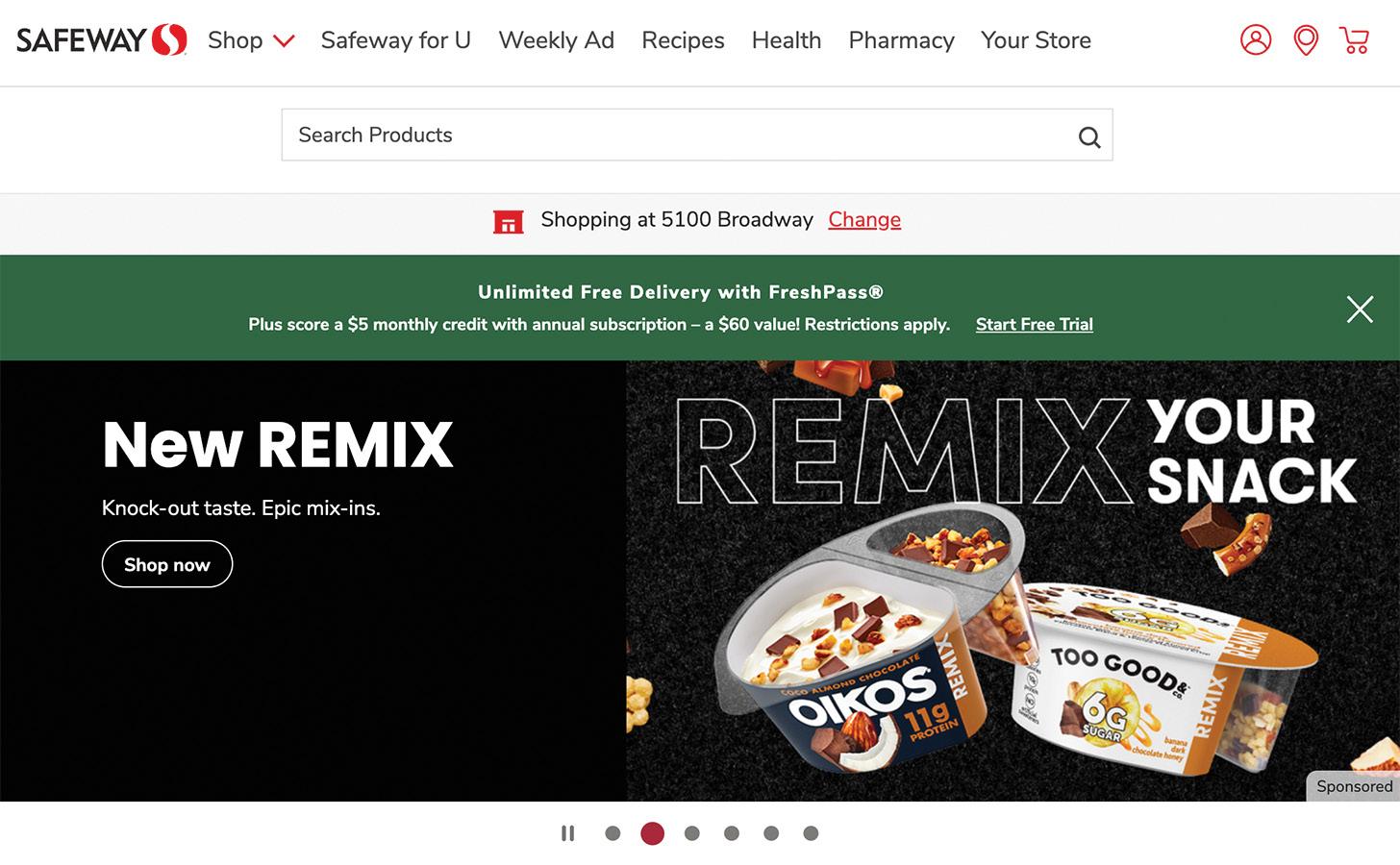
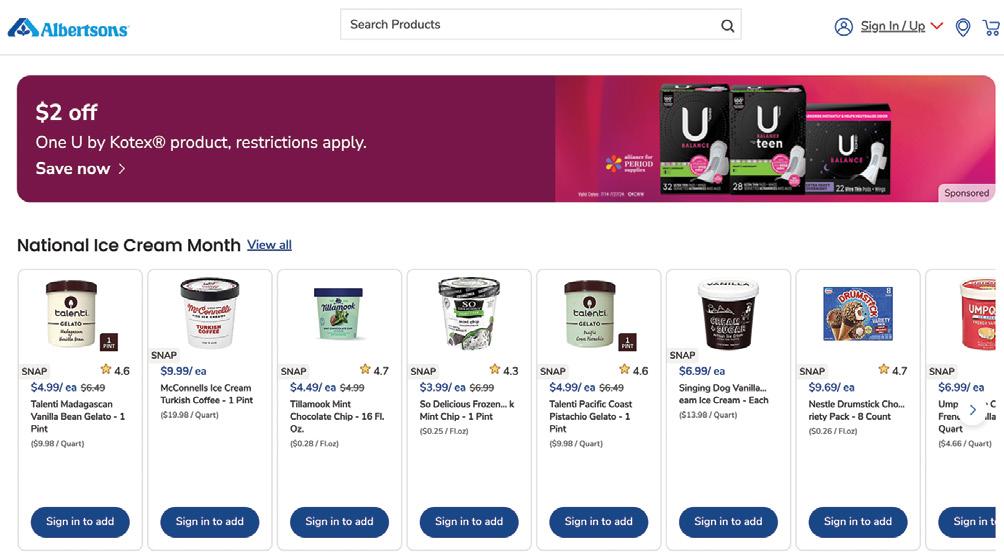

Meet the 25 marketers who are forging the evolution of retail media and advancing connected commerce across the path to purchase.
BY ERIKA FLYNN
The Path to Purchase Institute’s Retail Media Awards program recognizes innovative leaders across brands, retailers, agencies and solutions providers who are effectively leveraging (or helping others leverage) retail media for successful digital and omnichannel campaigns.
After combing through a plethora of nominations, the editors of P2PI for the second straight year selected 25 commerce marketers who are pioneering retail media. The 2024 winners were honored in a June ceremony at the Retail Media Summit in Chicago. Read on to get to know the commerce marketers who are making an impact at their companies and across the industry …


KELLEN AXEN Director of Insights
Lowe’s
One Roof Media Network
Over the past year, Kellen Axen was charged with staffi ng and developing the Retail Media Insights team for the Lowe’s One Roof Media Network (LORMN). His eff orts focused on leading the development of a formalized learning-plan process with key client partners to help provide strategically valuable insights for brands. He also eff ectively created a structure to unlock custom insights for LORMN and for its clients tied to key knowledge areas, such as audience, creative, category, etc. Axen’s work also included partnering with the retailer’s data science and engineering technical partners to drive innovation around measurement foundations, while discovering new capabilities for the future such as customer analysis, LTV and platforms. He contributed to the IAB’s measurement standardization workstream to help set and develop industry standards in retail media measurement, and he’s involved with the Lowe’s Black Business Resource Group, mentoring others within the organization to help them reach their own goals. Axen is passionate about coaching and training, and he’s proud of his work standing up the insights function at LORMN — which then led to training and developing his team on what best-in-class insights look like. He teaches advertising and promotions at Bethel University as an adjunct instructor, passing along key learnings like the importance of measurement within media, objective/KPI alignment and other best practices to the next generation of advertisers within the industry.
The next big trend in retail media is: Artificial intelligence.
The most exciting opportunity in retail media is: In-store. Specifically, in-store measurement insights.
The future of retail media is: Customer-centric — driven by deep customer insight.

JACQUELYN BAKER CEO
Omnicom Commerce
At the helm of Omnicom Commerce since July 2023, Jacquelyn Baker has a transformative vision that laid the groundwork for the creation of many successful connected commerce campaigns in the past year, including ZOA’s “Big Dwayne Energy,” an omnichannel platform with a commercial bias that drove demand and got retailers excited; Boar’s Head’s “How 2 Charcuterie,” which transformed a social trend into a shoppable consumer experience; and Pepsi Mini’s “I Wish I Was A Little Bit Smaller,” which synthesized a cultural insight with a commerce insight to drive e-commerce sales. Baker believes there is a need and potential for forging stronger connections between retailers, shoppers and brands. She has led the conversation on how retail media networks can shape the path to purchase, and she’s a speaker and thought leader on the power of data in retail media networks. Today, she is forging the strategy for Omnicom Commerce’s holding company to embrace a commerce-first approach across all platforms, transforming Omnicom from an advertising company to a sales and marketing company. Baker has streamlined the practice area agency portfolio, redefined agency responsibilities, branded the network uniting six leading commerce agencies and, joining forces with Flywheel, built a world-class network that is delivering hyper-specialized, end-to-end commerce experiences at scale as a repeatable pathway to growth. Uniting and harnessing specialized capabilities, including retail media, with both scale and expertise into a single-threaded entity is a strong focus for Baker and her team.
The next big trend in retail media is: Data-influenced targeting for non-endemics. There is a tremendous opportunity to leverage retailer first-party data to target category-relevant audiences with messaging for brands that are not sold within that specific retail channel from which the audiences were sourced.
The most exciting opportunity in retail media is: Delivering brand-to-sales funnel collapsing. Consumers want what they want, when they want it. Shoppers are predisposed to look to retail channels online and in-store to research products and discover brands with the expectation that, if they choose to buy now, they can. The funnel collapses in that environment where the awareness, consideration and conversion occur in the same place, sometimes almost instantaneously.
The future of retail media is: More retail media — expanding relevant reach. Retail media has ushered in what many are calling the third wave of media. It’s new and ever-evolving. The opportunity to try new things, learn faster and scale growth more quickly abounds. The data that powers retail media creates the platform where relevancy meets reach meets conversion.


DIANE DE LA BARONNIERE Global E-Commerce Media Director Haleon
Diane de la Baronniere has served as Haleon’s head of e-commerce media for nearly two years, based in London. In the past year, she orchestrated a Digital Commerce week to engage all parts of the company, with nine sessions covering various topics from AI and data to social commerce adoption (with more than 1,000 attendees across the sessions). She also upskilled a wider team with a series of training from foundational topics including everything from “What is retail media?” to “How to drive best-in-class retail media partnerships.” She built and delivered the company’s first retail media strategy for markets to embrace the opportunity and leverage media to strengthen their relationship with the different retailers. She also developed and is rolling out a media sufficiency budget model to support its local markets in creating a budget aligned with their growth and acceleration ambitions. De la Baronniere has concentrated her efforts in reinforcing and updating Haleon’s retail media strategy and has delivered a data one-stop-shop for local markets to be able to make informed decisions when it comes to budget, investment, pace, etc., as well as performances and lower funnel impact measurement. She has effectively brought more knowledge and expertise to local teams throughout the company’s internal live community, growing their common understanding and sharing learnings and best practices. Finally, she has narrowed in on specific market and brand mixes to deliver focused sessions and support in an effort to scale up learnings and insights.
The next big trend in retail media is: Data standardization.
The most exciting opportunity in retail media is: Full-funnel attribution measurement.
The future of retail media is: To be fully integrated in media plans.

PAUL BRENNER
Senior Vice President,
Retail Media & Partnerships
Vibenomics, a Mood Media company
Paul Brenner supports retailers in delivering effective advertising solutions by leveraging ad tech to implement audio, digital and experiential advertising in-store. His recent work has focused on the standardization of instore tech, measurement and attribution. His work with the IAB has centered around in-store — defining the media type, its measurement objectives and its targeting tactics, considering the current fragmented state of gathering data and measuring effectiveness. In the IAB’s recent Retail Media Measurement Guidelines, Brenner took a step toward in-store standardization by defining the taxonomy of in-store zones. Laying the foundation for retailers, he defined the general requirements for in-store measurement and reporting parameters. Brenner continues to establish and standardize in-store opportunities, from activation to measurement. He was the “In-Store” team lead for the IAB’s 2023 Retail Media Buyer’s Guide. This guide is the first industry-wide, unified guide defining retail media, measurement objectives and targeting metrics. Brenner was also a main contributor for the IAB/MRC Retail Media Measurement Guidelines and primary author of “Chapter 6: In-Store Digital Place-Based (DPB) Environments Measurement,” where the general requirements for in-store measurement and reporting parameters for in-store were defined; and for the IAB’s In-Store Playbook and primary author of “Chapter 4: Advanced Measurement & Optimization,” which will enable and

ANDREA BENNING Retail Media Manager, Nutrition Unilever
Andrea Benning joined Unilever in her current post in October 2022. Since then, she has overseen the successful implementation of the retail media practice within the ice cream and nutrition digital media commerce hubs at the company, including the establishment of new processes and a stronger focus on media operations. She says the successful execution of these initiatives was made possible through collaboration with her retail media colleagues across various business units. Their collective efforts have culminated in the establishment of a best-in-class retail media force, positioning Unilever as a preeminent media powerhouse of the future. By overseeing and analyzing media initiatives across an extensive portfolio of more than 18 retailers, and approaching it from a holistic business unit perspective, Benning was able to deliver impartial investment recommendations grounded in data. This involved the systematic utilization of brand KPI and audience frameworks, ensuring campaign consistency and providing a clear basis to ascertain the success or failure of Unilever media endeavors.
The next big trend in retail media is: Shoppable recipes.
The most exciting opportunity in retail media is: Unified measurement.
The future of retail media is: End-to-end marketing.
educate retailers, agencies and brands on the DOOH and in-store opportunity in retail media, from activation to measurement. Brenner also established a partnership with Microsoft Advertising, leading the way for omnichannel closed-loop reporting. The effort measured joint exposure to digital in-store and onsite tactics and created an end result that proves the effectiveness of brands leveraging omnichannel solutions within retail media strategies.
The next big trend in retail media is: Providers will adopt standardized systems, offering scalability and smooth integration. Retailers will refine their digital investments. Advertisers will begin demanding closed-loop measurement across onsite, off site and in-store tactics.
The most exciting opportunity in retail media is: In-store digital is poised to reinvent brick-and-mortar marketing. The shift toward more targeted and contextually relevant advertising reestablishes in-store advertising as a vital component to any retail media strategy that serves consumers with engaging experiences, digitizes shopping journeys and monetizes retailers’ in-store media.
The future of retail media is: RMNs will soon lead the “Always On” revolution — an uninterrupted, programmatic approach via digital channels to enhance shopper experiences, create dynamic content and standardized measurement, and connect with audiences in a more personalized way.



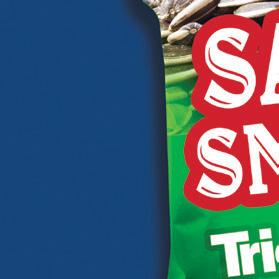



















EVP, Growth, Innovation and Media
VML Commerce
Chance Chapman leads the integration of creative commerce into retail media, emphasizing creativity as a crucial multiplier of clients’ investments. He has worked to deliver relevant, actionable, measurable media activations to consumers where they are, at the right time, across all retail media platforms and digital channels. Recent work includes the awardwinning retail media campaign, OreoCodes, a commerce experience that taps into the minimalistic similarity between bar codes and a stack of Oreos, allowing customers to get off ers directly from its all-time complementary partner, milk, that are redeemable at retail locations. Another recent eff ort was Lucky Charmology, where consumers scan their cereal bowl using technology created by VML’s in-house tech lab, which reveals a personalized fortune based on the magical charms in their bowl. The program has seen successful brand engagement with Lucky Charms while also turning every fortune into a repeat usage occasion, encouraging repeat purchases in partnership with Target. Chapman is an active member of the IAB Retail Media Measurement Group, where he contributes to establishing industry-wide retail media measurement guidelines and developing solutions that improve the interactive advertising and marketing ecosystem. In January, IAB unveiled the fi nal version of the Retail Media Measurement Guidelines, a testament to collaborative expertise and industry-wide consensus. This comprehensive framework is not just a set of standards but a roadmap to enhanced transparency and consistency in retail media measurement.
The next big trend in retail media is: 1). Unified commerce approach. The shift from silos of e-commerce, customer and brand teams to a truly holistic approach, emphasizing seamless consumer experiences.
2). Convergence of retail models. The merging of first-party online retailer and marketplace models, driving strategic shifts in retail media to support diverse sellers and sophisticated, brand-centric advertising campaigns.
3). Balancing supplier and retailer relationships. Finding balance as suppliers seek more value from their investments in retail media and retailers seek increased investments from suppliers. Addressing the complexity of comparing trends across different retail media networks requires cohesive strategies and industry standards to maintain and strengthen these crucial partnerships.
The most exciting opportunity in retail media is: The rise of creative commerce, where innovative, brand-centric solutions are driving both sales results and brand love. This approach integrates creativity with commerce strategies, demonstrating that compelling, award-winning campaigns can effectively enhance consumer engagement and boost sales, setting a new standard for excellence in the industry.
The future of retail media is: Up and to the right. As retail media continues to evolve and expand, it will play an increasingly pivotal role in the commerce ecosystem, driving innovation and delivering measurable outcomes. Retail media spend is projected to reach $129 billion in the U.S. by 2028, driving the increasing importance of data quality and technology advancements to enable better targeting, measurement and optimization capabilities across various ad channels.

Head of DG Media Network Operations Dollar General
Charlene Charles sits at the helm of the Dollar General Media Network (DGMN), overseeing advertising opportunities on Meta properties, launching digital media marketing campaigns, running sponsored product ads (powered by Criteo) and onsite direct ads, telling DG stories within the DG App, and offering unique landing page experiences on DG.com. She understands the increased need for accelerating the omnichannel experience, and that brands must reach shoppers at the right place and time through its retail media networks. Charles and her team ensure that DGMN is providing its brands with access to real-time data to help them serve DG’s unique customer base across 20,000 stores in 48 states, delivering more than 2 billion transactions annually. DGMN stands out for its ability to offer brands access to hard-to-reach customers who might potentially be overlooked with traditional digital marketing tactics, creating more meaningful connections, a smoother experience and a more customized path to purchase. A recent example of DGMN successfully harnessing the power of data is in its partnership with Meta. Through it, advertisers reach DG’s more than 90 million unique customer profiles across the Meta ecosystem, which includes Facebook and Instagram News Feeds, Stories and Reels. Using this measurement and analysis, DGMN can evaluate the business impact of Meta marketing investments to a particular brand and uncover new insights, inclusive of quantifiable metrics such as return on ad spend, as compared to more traditional and directional metrics such as intent to buy.
The next big trend in retail media is: To create scaled unique/unified omnichannel experiences. The most exciting opportunity in retail media is: Identifying authentic opportunities and strategies. The future of retail media is: In the data for deeper insights and higher ROI.


PARBINDER DHARIWAL Vice President, General Manager CVS Media Exchange
Over the past year, Parbinder Dhariwal led the team at CVS Media Exchange that has been committed to helping brands and consumers connect through expansive reach, access to real people, transparent reporting and actionable insights. Dhariwal played a significant role in revamping the CMX brand in an effort to amplify brand exposure and perception, and he spearheaded the launch of a data clean room collaboration with Pinterest and LiveRamp. Other key projects included enhancing CMX Performance Dashboard capabilities for supplier partners to include daily engagement and sales metrics, and working to maintain and grow CMX team/talent retention and cultivated crossfunctional collaboration. Dhariwal has also contributed to expanding CMX’s commitment to campaign data transparency through precise sales attribution and stronger campaign optimization for partners. To achieve this, he has been focused on driving strategic partnerships with credible organizations to help enable innovation through collaboration, including working with the IAB and a coalition of other retail media networks to define standardization metrics and methods for measurement practices in the retail media network industry. The impact of CMX’s partnership with the IAB is pushing the industry to hold it accountable to higher measurement standards and promote comparative campaign results.
The next big trend in retail media is: Measurement standardization across all retail media networks.
The most exciting opportunity in retail media is: In-store personalization at scale.
The future of retail media is: Seamless, omnichannel campaigns, online to in-store.

OZ ETZIONI CEO & Co-Founder Clinch
Oz Etzioni leads operations for the company’s Flight Control platform that enables retail media networks to provide speed and scale to their organizations and brand advertisers along with creative engagement insights that are utilized in real-time for audience enrichment/segmentation, creative and media optimization and more. Etzioni built Flight Control to be open and agile, to work with any pillar of a retail media network’s tech stack, and perfectly complement internal processes, assets, etc. Over the past year, he enhanced Flight Control with a series of Gen-AI powered features that bring even more efficiency and automation to the campaign activation lifecycle, from strategy to optimization, including the ability to automatically generate campaign strategies with multi-layer decisioning logic from a written prompt, automate the way creatives are built, edited and scaled at unprecedented speed with superior accuracy, and query reporting, access knowledge and

MELISSA EMERICH
Chief of Staff, Director of Strategy & Revenue Management
Peapod Digital Labs/ AD Retail Media
Melissa Emerich led the rebranding and reintroduction of AD Retail Media to the market. The rebrand campaign was crucial as the industry continues its rapid growth with new retail media networks launching all the time. She strategized a brand relaunch campaign with a limited budget and a challenging timeline, and rolled out new branding, including a logo and tagline, a website, a social media campaign and earned media PR spotlights. Because of these eff orts, AD Retail Media is recognized among other retail media networks that have been around for more than 15 years. Emerich says innovation is always on the team’s mind, and a highlight of this past year has been planning the organization’s go-to-market strategy around new products such as shoppable short-form video as well as building out its broader sales enablement strategy. With the explosion of retail media networks over the past three years resulting in a more crowded marketplace, she realized that AD Retail Media was not appearing in industry reports and rankings, likely because it was lacking a “brand.” She developed a new logo and tagline and started marketing through social campaigns and earned media spotlights. Her eff orts led to AD Retail Media jumping to the No. 5 overall CPG ranked RMN in Insider Intelligence’s 2023 rankings.
The next big trend in retail media is: Customer-centric experiences such as in-store digital signage. There has been so much attention over the past few years for digital advertising and digital inventory that companies have lost sight of how to connect with customers in a more meaningful way while they are shopping in the physical store.
The most exciting opportunity in retail media is: From a revenue perspective, non-endemic advertising. Customers want to extend their shopping experience beyond groceries. Retailers can offer those products in a way that does not disrupt the customer experience but enhances it.
The future of retail media is: Strategic integration of innovative technology will redefine the way companies optimize and bring campaigns to life in the next two years.
acquire insights in an instant. Clinch was awarded “Most Innovative Use of GenAI” by Business Intelligence Group; locked in new deals to support omnichannel ad serving + DCO (dynamic creative optimization) with Kroger’s 84.51, and Tesco; and contributed to several retail-media-network-focused IAB initiatives, such as Buyers Guide to RMN, and RMN’s guide to shoppable CTV. Etzioni also built a framework for retail media networks to enable truly seamless, largely automated, omnichannel campaign activation that also enriches and amplifies their first-party audiences at massive scale.
The next big trend in retail media is: Seamless connectivity.
The most exciting opportunity in retail media is: The way it has shaped the advertising ecosystem.
The future of retail media is: Speed and scale unlike ever before, driven by data.


Vice President, Growth Marketing, ELC Online
Estee Lauder Cos.
Lauren Fleischer was named to her current post just more than a year ago. Since then, she has enhanced the retail media capabilities at Estee Lauder Cos. by recruiting a team of retail media professionals. She also in-housed key areas of North American retail media execution, achieving double-digit ROAS growth and substantial sales impact. She led the company’s digital-first partnerships with retailers and negotiated key joint business plans, resulting in advanced measurement capabilities and improved ROI, and spearheaded a turnaround effort for a valued retail partner, driving more than 10% growth in online sales through collaboration with the retailer’s emerging media network. She says the ELC Online’s digital growth marketing team is embedded within its regions that collaborate closely with its brands to optimize their retail media investment. This group has been instrumental in accelerating Estee Lauder Cos. retail media acumen in several areas, she notes, from refining media execution and measurement to establishing strategic partnerships with its valued retail partners. The team’s focus has been not only to enhance ELC’s presence, but also to set the bar for performance and collaboration in the beauty industry’s emerging retail media landscape.
The next big trend in retail media is: Embracing automation to dynamically target consumers, personalize messaging, automate reporting and reduce workload for retailers and advertisers.
The most exciting opportunity in retail media is: The opportunity to transform the reputation of retail marketing, from being perceived as an afterthought to becoming a powerful, measurable marketing channel.
The future of retail media is: Measurable, scalable and prepared for a cookiefree world.

Group Director, Activation and Market Planning
Kroger Precision Marketing/84.51
Serving as director of programmatic buying since early 2022 and assuming her current post in April, Shannon Hartman has led Kroger Precision Marketing’s media-buying in-housing initiative that achieved signifi cant enhancements in both display iROAS and aROAS, leading to notable increases in sales lift. This success highlights her team’s profi ciency in optimizing ad performance and prioritizing meaningful ad experiences for Kroger shoppers. She had also spearheaded innovative strategies that led to a signifi cant increase in iROAS and household penetration rates on a specifi c social media platform, showcasing adeptness in leveraging platform dynamics to expand reach and drive returns, which underscores profi ciency in maximizing the unique characteristics of social media audiences for eff ective growth. She says she and her team achieved notable success by driving long-term sales growth and enhancing shopper value while eff ectively managing industry media benchmarks. Following KPM’s in-housing transition, signifi cant improvements were observed in key metrics including increased click-through rates, enhanced viewability,

EDWIN FU Founder and CEO Placements.io
Edwin Fu founded Placements.io, a modern revenue management platform for sellers of digital advertising, more than 11 years ago. He points to several of the company’s efforts over the past year, including Storefront, its white-labeled, self-service portal that clients can use to expand advertising sales to small- and medium-sized buyers. Another is the addition of a new product, code-named “Campfire.” Fu and his team reverseengineered its order management system and developed a tool for marketers to streamline the planning, buying and activation of omnichannel advertising. Campfire empowers brands to in-house media buying and boosts productivity and profitability for agencies as well. Fu is also very optimistic about the introduction of AI across its platform. The company is deploying AI capabilities to drive automation and more quickly provide insights. He says AI is a large focus, and customers will be seeing more on that front this year. Fu is also working on unlocking scale and revenue as retailers are tasked with spinning up media businesses quickly. Empowering those retailers to set the operational foundations that unlock efficiencies, support best practices and power sales performance helps them more quickly and confidently scale and recognize their revenue potential.
The next big trend in retail media is: Scaling. The most exciting opportunity in retail media is: Attribution from real customer sales. The future of retail media is: The third wave of advertising and scale.
higher engagement rates and a rise in the volume of managed campaigns. Hartmann also oversaw the eff orts to implement best practices and industry standards to achieve retail media-buying success, such as rigorous data analysis leveraging advanced analytics tools; optimized budget allocation; negotiating strategic partnerships; and proactive optimization with continuous monitoring and adjustment of campaign performance that ensured maximum exposure and engagement. As a result, KPM has achieved more effi cient allocation of advertising budgets, eliminating waste and redirecting resources to channels and placements that yield tangible results.
The next big trend in retail media is: A serious focus on sustainability.
The most exciting opportunity in retail media is: AI. Leveraging AI in media buying enables insights.
The future of retail media is: Accountable. Vanity metrics are going extinct.


EVAN HOVORKA
Vice President of Product and Innovation Albertsons Media Collective
Evan Hovorka joined Albertsons Cos. in October 2021 as head of products and innovation and charged with building and scaling a modern retail media product suite. In his current post since March 2023, he has since launched a first-to-market, closed-loop measurement in a cleanroom, with Pinterest and Liveramp driving incremental results. He also launched a first-to-market CTV capability with NBCu, Google DV360, PAIR ID and Liveramp to unlock retail-media-network-specific capabilities to improve brand CTV campaign scale and performance, and launched a self-serve product allowing brands to leverage more flexible access to retail media network assets, like audiences and closed-loop measurement. Hovorka also launched and recorded two seasons of The Garage Podcast, a retail media podcast inspired by a collaboration and innovation mindset with the intent of simplifying the sometimes-complex retail media ecosystem. Guests include leaders from Pinterest, Google, Criteo, NBCu/Freewheel, Fetch, the CPG Guys and Kargo. Through collaborative partnerships and a passion to improve the retail media network ecosystem, Hovorka has also been able to reshape products with top ad-tech companies in a way that removes friction for brands, improves transparency, pushes standardization and expands the

Co-Founder, Chief Growth Officer, Threefold (SMG)
As co-founder and chief growth officer of the entire SMG agency network, Matthew Lee has been focused on growing and maintaining its diverse portfolio of retail media network partners. He helped beat aggressive growth expectations for U.K. grocery retailer Morrisons during its first year with a Threefold-powered retail media network, and also helped relaunch top convenience retailer Co-op’s retail media proposition as Co-op Media Network. Lee’s efforts also helped to win and transition Asda (top 5 U.K. grocer) to a Threefold-powered retail media network, which involved onboarding experts and Plan-Apps, Threefold’s proprietary retail media operating system that powers all of its retailer partners’ networks. Asda marked his 10th sell-side partnership win since founding the SMG agency network more than 15 years ago. He further led the team in North America to expand SMG to the continent under the Threefold brand, regularly attending major retail events and meeting with major retailers in the U.S. and Canada to discuss how Threefold can build or strengthen their retail media strategies. By transitioning Asda to a Threefold model, onboarding Plan-Apps and strengthening its brand identity under the newly minted LS Eleven Media Services name, it has set one of the largest grocery retailers in the U.K. on a path toward significant and sustainable retail media growth. Asda will now offer targeted, customer-centric, creative and measurable omnichannel campaigns that help brands reach the right audience through the right touchpoints, whether in-store, online, TV, social and other digital channels.
The next big trend in retail media is: Greater data collaboration partnerships.
The most exciting opportunity in retail media is: The store. The future of retail media is: Omnichannel: In-store, online and offsite.
full potential of the industry. Specifically, he created cleanroom, identity, social media transparency and merchant/RMN solutions that continue to lead the industry.
The next big trend in retail media is: The ultimate goal of retail media is supporting CPGs with the full power of a major retailer. This extends far beyond media and integrates merchandising, price and promotions, in store, standardization and flexible service models. There has been a shift of RMNs to be fully integrated and progressive in partnerships and products.
The most exciting opportunity in retail media is: Each CPG brand is unique and demands flexible RMN solutions that create minimal friction for their in-house teams, agencies and shopper marketing teams. The Collective wants to play a role in every media channel a CPG plays in, bringing more value to be gained for all parties through consistent insights, audiences or measurement.
The future of retail media is: The retail media industry has a ceiling, but progressive retailers that co-design a full spectrum of services, insights and activations can break through that ceiling, unlocking even more mutually beneficial value with the CPG brands and agencies they partner with.

CASSIE MABE
E-Commerce Director The Fresh Market
Cassie Mabe launched the U.S.’s first-ever Shoppable Video-Live Commerce Retail Media Network for The Fresh Market this past year, recognizing the potential of leveraging short- and long-form shoppable video livestreams to create a virtual shopping experience that closely replicates the in-store sensory experience. This approach has enabled The Fresh Market to actively engage with e-commerce grocery enthusiasts and consumers, fostering a compelling and inspiring customer journey while yielding results that included more than $10 million in livestream attributable revenue through December 2023, $800,000 in committed retail media network revenue in 2023, and more than $1 million in retail media network revenue already secured for 2024. This amounted to securing 63 contracted brand sponsorship packages in 2023 and an additional 55 for 2024. By introducing this first-of-its-kind retail media network to the market, Mabe has positioned The Fresh Market as a thought leader in the retail tech space. The company has enabled a fully integrated customer experience that seamlessly bridges the gap between the immersive in-store shopping journey and the online realm, and her leadership role in the shoppable livestream video program has garnered industry-wide recognition.
The next big trend in retail media is: Video.
The most exciting opportunity in retail media is: AI for enhanced targeting and ad relevance.
The future of retail media is: In stores (phygital retail).


ANNE MARTIN Director, Shopper Marketing Mondelez International
A more than eight-year veteran of Mondelez International, Anne Martin assumed her current role in April 2022. She points to her work on an OreoCodes test-and-learn program that leveraged proprietary image recognition technology as a key initiative in the past year. She and her team worked in partnership with Albertsons Media Collective tools and assets to drive the program, which has been highly successful and, to date, has garnered 70 industry awards. The technology has since been repurposed to create other meaningful tech-forward programming, including a belVita program at Target in partnership with Roundel. Martin is continuously testing and learning new capabilities. An alpha test with Albertsons Media Collective and Pinterest on a Mondelez clean room test proved to be very informative and encouraged thinking of new ways to partner with third parties and retail media networks. Martin is a member of the Albertsons Media Collective Client Council, which affords her the opportunity to provide feedback of upcoming capabilities and a willingness to run testand-learns. She reviews capabilities not just from a Mondelez perspective but also in the industry and compared to other retail media networks.
The next big trend in retail media is: Measurement consistencies implemented.
The most exciting opportunity in retail media is: Integration with an in-store/full omnichannel experience.
The future of retail media is: Advanced targeting and personalization driven by AI.

ELIZABETH MARSTEN
Vice President, Innovation & Growth, Commerce Media Tinuiti
Elizabeth Marsten joined Tinuiti in 2019, serving the marketplace strategic services team. She assumed her current post in early 2023 and is a regular contributor to Adweek, with almost 20 published pieces that delve into retail media trends, tactics and traps. Her most recent article is on the change in search, explaining that the industry is moving into the discovery phase of the funnel, not just a list of links to dig deeper into. Her argument is that search is getting broader and results are getting more detailed, but fewer, and involving more features like video, lists, basket-building recommendations and augmented reality-type pop outs. But it all still sits in a search results page. Another topic focuses on the opportunity that Amazon and other retailers have for non-endemic advertisers in sectors of business that are not e-commerce. Marsten believes that first-party data collected by these retailers over the last few decades can change the business-to-consumer-lead generation space for marketing in a very disruptive, but positive way. She continues to push the status quo, challenging retailers and brands to prepare and take advantage of a fast-paced and still maturing industry. Marsten says it’s important to ask questions and provide context because if one retailer or

KATIE MCBRIEN Senior Vice President, Commerce Spark Foundry WW
As the senior vice president of commerce since April, Katie McBrien is an advocate for creating new processes to be able to deliver work at the highest level of efficiency. She is driving conversations across clients to bring planning to a higher holistic level, bringing shopper and traditional media teams together. She has led the Shelf Intelligent Media vision, strategy and implementation across several large CPG clients, which is inclusive of leveraging Profitero digital shelf technology paired with retail media network media automations both on and off site to deliver the future of retail media performance. McBrien has also led innovation in the alcoholic beverage space, including its first-ever Retailer Media Prioritization Tool and innovation in media with BevAlc delivery partners. Her work on retail media network audience integrations through Walmart Luminate, Kroger Stratum and Amazon Marketing Cloud with national media has delivered increased performance, de-duplication of campaigns and efficiencies. McBrien has been a leader in the commerce industry for a decade with a full complement of agency and client side roles in shopper, e-commerce and now retail media. Most recently, she is leading large CPG clients into modern holistic commerce marketing, investment and optimization in her current role.
The next big trend in retail media is: Data transparency –pushing retailers to be more transparent with the data they share. As the company strives toward a holistic planning model across many of its teams, there is a need to be able to truly understand who it is reaching and where.
The most exciting opportunity in retail media is: Integration of retail data through clean rooms. By integrating advertiser first-party and retail media data into a single clean room, the team will be able to more efficiently and effectively reach audiences that are most likely to convert while managing overlap and duplication.
The future of retail media is: Incrementality. Having a true understanding of the incrementality its media is driving is at the center of many of McBrien’s conversations.
platform has a feature or different measurement standard that the other doesn’t and there isn’t a general understanding of what that means or how the teams can compensate, catch up or challenge, we won’t move forward as an industry.
The next big trend in retail media is: Non-endemic advertising self-service. ... Making the vast amounts of data that Amazon has, across so many properties and over years of collection, self-service allows these service-based businesses access to a completely new way of lead and awareness generation.
The most exciting opportunity in retail media is: Gen Alpha and in-store shopping experiences with massive potential. Gen Alpha’s buying power is already unprecedented, and they are shaping the way we will shop in the future since they are overly comfortable with screen experiences, mobile access and internet access. And they are growing up with AI.
The future of retail media is: Search. Even with all our enhancements in more screens, interactive experiences, QR codes and AI, we, as humans, still have a basic need to search. ... We need that search bar, wherever it is.



ROBIN NEUFELD Director of Marketing
Loblaw Cos. Limited
Robin Neufeld helped to launch a consolidated retail media network at Loblaw that merged retail insights, loyalty and media into a unified suite for partners. She also led the go-to-market planning and launch of a number of media product solutions, including the launch of its national in-store screens network, and grocery audio ad network this past year. She partnered with the Path to Purchase Institute to bring the Retail Media Summit to Canada and supported the advent of the first-ever Mars Agency Retail Media Report card. Neufeld is also working to elevate the profile of retail media in the Canadian media industry, helping to shift it from an emerging space to the mainstream in media and marketing circles, and focused on helping marketers and media agencies navigate the fast-evolving retail media space with educational content and industry activities.
The next big trend in retail media is: Supercharged video. Connected TV viewing is on the rise, which is exciting for marketers since video is a trusted format for effective brand storytelling. Coupling video with the purchase-based audience targeting available from retail media networks presents the opportunity to make it even more effective by better connecting brands’ messages with the most receptive consumers.
The most exciting opportunity in retail media is: Its potential to reinvent brand marketing.
The future of retail media is: Omnichannel + incremental (impact). Investments in retail media have skewed toward low-funnel digital tactics like sponsored products. However, with the broad range of media channels and formats available from omnichannel retail media networks like Advance powered by Loblaw, brands can now build marketing campaigns that connect with customers in meaningful moments both online and in-store across all stages of the path to purchase. For the potential of retail media to be realized, we as an industry must not only make it easier to build 360-degree campaigns that come to life consistently throughout the omnichannel purchase journey, but also make it possible to measure the full, true impact of these multi-touch omnichannel campaigns.
CHRIS RIEGEL CEO/Founder of Stratacache PRN, a Stratacache company
Chris Riegel has served as PRN’s CEO for more than 25 years. He says the past year has produced dozens of new in-store retail media projects in the U.K., Europe, U.S. and Canada. Many of the company’s largest retail customers are in the test-and-learn phase of in-store retail media, determining which areas of their store can be activated with in-store media, defining and refining the content and monetization strategy, and moving into large-scale rollout. And to Riegel, the most exciting projects are those in which retailers have already scaled their in-store retail media network capabilities and are leveraging their existing networks as a critical component of retail media network revenue growth, using their data and AI to deliver personalized shopper messaging at scale. Riegel’s efforts in driving focus to instore and streaming as onsite and mobile retail media networks have matured has been impactful. Retail media networks leverage in-store data, paired with smart digital displays, which unlock the media power of the in-store audience across all channels, including connected TV, which is the fastest-growing major ad channel in the U.S.
The next big trend in retail media is: Sensors for direct attribution. Using advanced sensors, the company creates session ID’s for all shopper pathing, which can be tied back to loyalty or transaction data at the register. This gives retailers the power to build audiences based on in-store shopping behavior and present compelling offers to encourage immediate online conversion or for use during the customer’s next in-store visit.
The most exciting opportunity in retail media is: Fully connecting media to a proven customer action by tracking impressions, engagement, conversion and sale.
The future of retail media is: Sentient stores that provide a consumer shopping experience in a physical retail store where advanced sensors receive real-time dynamic data signals and AI provides real-time and predictive knowledge of the store, the inventory, the shopper and the journey. This allows in-store media to be localized and personalized and delivers full-funnel attribution. Tracking a store like a website opens up an ability to radically improve the shopping experience for shoppers, while increasing product and category activation. This “unlocks” the retail media network capabilities of the physical store.

MELISSA SALAS Director of Marketing ShopPremiumOutlets.com (a Simon Malls company)
Melissa Salas heads up the marketing efforts for ShopPremiumOutlets.com (SPO). This past year, Simon Malls doubled its performance-based partnerships, including top-performing influencer marketing networks, thereby expanding its reach through brand advocates of SPO. This strategy not only enhances brand advocacy but also drives sales through trusted voices. Her team also developed and launched its “Be You With Us” brand and customer influencer program and platform, where customers can join and share their favorite products on the SPO and get paid for their influence. The initiative fosters a sense of community and loyalty among its customer base while also driving user-generated content and engagement. Salas also led efforts to introduce its AI shopping assistant to help shoppers find anything they want, along with a photo search feature where users can upload any photo and the company will match the “look” as well as its color search feature for those seeking something very specific. It has partnered with BNPL (Buy Now, Pay Later) providers Klarna and Afterpay, and has added Catch to a growing list of payment options for shoppers. All these key projects have been incorporated into the company’s marketing strategies and media execution.
The next big trend in retail media is: Social commerce.
The most exciting opportunity in retail media is: AI shopping.
The future of retail media is: Voice commerce.


MEGAN SANTELLA Director, Retail Media Operations RedMedia (a Hy-Vee company)
Megan Santella has spent her entire career at Hy-Vee in a variety of roles. Over the past year, she was instrumental in building and designing the retailer’s new retail media network, RedMedia. One of her most signifi cant accomplishments involved developing a cross-functional endto-end workfl ow process that centralized and operationalized all data, assets and brand accounts for its internal teams. She also helped develop the retailer’s monetization and go-to-market strategies as it introduced RedMedia to the marketplace in the fall of 2023. She was named to her current post in December. As the team continued to advance RedMedia’s capabilities, Santella has worked closely with the retailer’s technology teams, as well as third-party partners, to develop and operationalize its diverse full-funnel media off erings such as sponsored product advertising with Prodx, off site and onsite media options, and in-store advertising

OLIVER SHAYER
Omni-Media Director Boots
Since joining Boots Media Group (BMG) three years ago, Oliver Shayer has played a pivotal role in its creation and growth, leveraging the extensive first-party data from Boots’ loyalty program. Recently, he worked to implement a digital infrastructure, with rapid deployment of digital screens and audio systems across Boots stores that dramatically enhanced the in-store customer and advertising experience. The introduction and launch of “Audience360,” an innovative digital tool that enables suppliers to utilize first-party data across various platforms with comprehensive measurement, marked a significant advancement in targeted advertising and ROI assessment. Shayer also points to the expansion of strategic media partnerships with major media entities like ITV, Channel 4 and Sky, which integrated Boots data with broadcaster video on demand inventory, significantly expanding advertising opportunities for suppliers. Also, over the past year, BMG managed collaborations with more than 650 brands across more than 5,000 campaigns. Shayer’s support for the creation and implementation of the ISBA Retail Media Framework has impacted the retail media landscape by advocating for standardization within the U.K.’s retail media industry and setting benchmarks for consistency and reliability. His efforts in forging strong partnerships with a range of the largest suppliers in the beauty, health and general merchandise categories have been crucial. These relationships have created a network of trust, support and shared goals, which have not only enhanced BMG’s strategic positioning but have also played a pivotal role in the success and evolution of retail media by enriching the collaborative ecosystem.
The next big trend in retail media is: Advanced analytics for retail media using AI.
The most exciting opportunity in retail media is: Seamless omnichannel experiences.
The future of retail media is: Deeper collaboration with the brand partners.
through options like in-store audio and digital video boards. She believes her strength in building strong and lasting relationships with brand partners has been highly impactful this past year. As a retail media network, the entire operating model is centered around the organization’s brand partners and their needs. At RedMedia, the team serves as its brand partners’ advocate and advisor, working together to maximize their marketing dollars with strategic placement and messaging that will resonate with targeted consumer groups.
The next big trend in retail media is: AI, as well as cost-perconversion modeling.
The most exciting opportunity in retail media is: The continued evolution of closed-loop reporting.
The future of retail media is: Evolving, exciting and all about data.

MK WOLTZ
Director, Media Connections
Danone North America
Over the past year, MK Woltz has led new ways of working across Danone North America’s marketing and sales teams to integrate its retail media approach, which resulted in developing comprehensive joint business plans with leading customers to create additional value for the company. She also led and executed two first-to-market retail media betas for TikTok and Premium CTV that delivered increased sales and household penetration for the company’s brands. Woltz has played a pivotal role in integrating retailer media into Danone North America’s overall marketing strategy. By emphasizing the importance of retail media, she has unlocked execution opportunities and helped the organization understand the power of national media in harmony with retailer media. As a thought leader, she not only trained the entire sales organization but also educated brand marketers on the significance of retail media and how to use the platform for maximum impact. She developed training to upskill the shopper marketing team to better understand media principles, and her efforts have empowered the team to leverage retail media effectively and increase support year over year.
The next big trend in retail media is: Digital expansion in physical stores.
The most exciting opportunity in retail media is: Data, insights and measuring the impact.
The future of retail media is: Continued focus on video in and out of stores.


























Our proprietary research examines what is currently driving shopper loyalty and how brands and retailers can adapt to attract and retain consumers as loyal, long-term clients.
BY JENNY REBHOLZ
In the ever-evolving retail landscape, brands and retailers continuously strive to achieve shopper loyalty. Long-term, repeat clients are the goal of any business; however, CPG brands and retailers need to harness shoppers’ purchasing power consistently, week after week and month after month.
Across categories, consumers are continuously bombarded with product options. Does loyalty play a role as they narrow choices and make purchasing decisions?
A March 2024 survey of 1,005 shoppers, conducted by the Path to Purchase Institute in collaboration with CVS Media Exchange, provides insights into
shopping behavior, specifically focusing on loyalty program participation and program value drivers. The qualified respondents indicated in-store or online shopping at least once a month in the apparel, department store, drug/health/beauty, outdoor/sports/leisure, homewares/furnishings or online-only retailer categories.
So, what is currently driving shopper loyalty and how can brands and retailers adapt to attract and retain consumers as loyal, long-term clients?
As brands and retailers evaluate the CPG retail experience and the effectiveness of loyalty programs, a general overview of current shopping behavior helps lay the groundwork for decisionmaking. Starting with shopping frequency, 7-in10 (or more) consumers say they most often shop in the grocery, mass/big box, online-only and drug categories. They shop these categories at least once a month, with 24%-53% across these categories referencing one, two or multiple times per week.
When analyzing opportunities to connect with customers in physical retail, three-quarters of respondents report shopping the drug and grocery categories in-store. Furthermore, across other consumable categories, 50%-60% shop in-store.
How can brands and retailers impact shopping behavior? The 2024 respondents cite convenience, product selection and overall value as the most influential factors when selecting brands and retailers. Looking closer at loyalty programs, just over half of the consumers surveyed rated these factors as very to extremely impactful when they think about the retailers and brands they choose to shop either in-store or online. More than half of survey takers also indicated a brand or retailer’s loyalty program is at least somewhat impactful on where they choose to shop. These programs have a similar effect on retailer/brand choice across generations and income levels; however, selection
of products, value and the overall shopping experience seem to be especially important factors to Baby Boomers compared to other generations.
Nearly 4-in-5 shoppers said they participate in at least one loyalty program. Of the respondents who do not participate, 25% identified a lack of perceived value as the reason. That perception is greater among men (32%) than among women (19%).
Interestingly, among those who do not participate in a loyalty program, Gen Z shoppers, when compared to other generations, were more likely to say they don’t have a membership because they use someone else’s. These younger shoppers are taking advantage of the shopping perks, but not enrolling in personal memberships. How can the programs be restructured, or what can brands and retailers do to incentivize these shoppers?
to discounts, promotions and coupons Free same-day and/or expedited shipping
Earning rewards for everyday or regular purchases Personalized promotions/deals
of
Personalized shopping experience based on preferences/previous purchases
Ability to set up automatic, recurring purchases
Q. Which of the following loyalty programs are you a member of today? (Grouped by category)
Q. In general, what motivates you to join and participate in a retailer or brand loyalty program? Select up to three items from the list.
BY PAMELA YOUNG
Loyalty programs are the lifeblood of retail media networks (RMNs), providing valuable shopper data that enables deep personalization and customization.
At CVS Media Exchange (CMX), the RMN of CVS Pharmacy — the largest retail pharmacy chain and home to ExtraCare, a longstanding leader in customer loyalty programs — we wanted to delve deeper into what drives engagement in them. Partnering with the Path to Purchase Institute, we surveyed 1,000plus shoppers across various industries to uncover the factors that strengthen fi rst-party data derived from loyalty programs, which can fuel RMNs. Our goal was to understand the factors that attract and retain consumers in a loyalty program and utilize those insights to improve solutions for our partners.
Here are five key insights from the study, along with their implications for RMNs:
INSIGHT #1: Essential purchases drive loyalty program participation. Seventy percent of shoppers buy groceries, drugstore products and online-exclusive items monthly, and these categories have the highest loyalty participation.
• RMN takeaway: Frequent purchases provide a wealth of granular data. By understanding how shoppers react to pricing, promotions, out-of-stocks and new products, RMNs can tailor campaigns to resonate with consumers, improving their shopping experience with relevant deals and rewards. This data also allows RMNs to understand shoppers’ baskets and predict future needs, driving category and brand discovery with hyper-relevant communications.
INSIGHT #2: Rising prices on everyday items make rewards crucial. Access to discounts, promotions and cou-
pons a consumer can use today are the top drivers of loyalty program participation.
• RMN takeaway: Retail media campaigns deliver cost-saving choices and timely messaging to price-conscious consumers. Leveraging fi rst-party data, advertisers can personalize offers in real-time, using solutions like dynamic creative optimization or inapp deals.
INSIGHT #3: Convenience and accessibility matter. Seventy-five percent of shoppers prefer in-store shopping for everyday items, often buying across categories. However, for two-thirds of shoppers who recognize the ease of online shopping, flexibility in reward redemption is critical.
• RMN takeaway: Leveraging loyalty data, RMNs act as omnichannel publishers, targeting shoppers across their entire journey and identifying conversion points for future campaigns. This is achieved through closed-loop reporting, providing advertisers precise measurement — where did they purchase — and attribution of purchases to campaigns.
INSIGHT #4: Grocery and drug categories have longstanding loyalty program members. Nearly half of shoppers in these categories express interest in personalized promotional offers.
• RMN takeaway: Personalization and simplicity drive rewarding experiences at scale. Using internal data, RMNs can tailor offerings to individual preferences, fostering long-term customer loyalty. CVS, with its 25-plus-year ExtraCare program, recognizes this value, but also understands the need to evolve and attract new shoppers with our updated loyalty program launched earlier this year.
INSIGHT #5: Generational differences impact loyalty preferences. Gen Z values personalized recommendations, instant gratification and exclusive access, while older generations prioritize consistent savings over time.
• RMN takeaway: Loyalty programs must evolve and offer rewards that appeal to all demographics. RMNs should analyze data, including generational differences in partnership with their internal loyalty marketing peers, to understand how these factors impact program enrollment and engagement. This is crucial for maintaining the strength and accuracy of an RMN’s data fidelity and overall solutions.
PARTING THOUGHT: Data quality is the foundation of an RMN’s power. Questioning the source and strength of data used by RMN partners is crucial. Loyalty programs with engaged participants who shop across multiple categories provide invaluable insights into consumer behavior, serving as a guiding light for understanding consumer preferences and driving effective marketing strategies. This can inform personalized content strategy from simple direct mail pieces to sophisticated programmatic digital campaigns.
By understanding and acting on these insights, RMNs can strengthen their loyalty programs, enhance consumer value, and improve their ability to serve advertising partners effectively.

About the Author Pamela Young is head of sales at CVS Media Exchange. Prior to joining CVS, she served on the founding sales team of Firework, a video commerce solution.
Q. In general, what motivates you to join and participate in a retailer or brand loyalty program? Select up to three items from the list. Access to discounts, promotions and coupons
Which of the following loyalty programs are you a member of today? (Grouped by category) Q. How many retailer or brand loyalty programs would you estimate you are a member of today, in total?
Examining the consumer threshold for loyalty programs, on average, respondents noted participation in four programs. The highest self-reported participation occurs in the grocery, drug and mass/big-box categories. From a generational perspective, Gen Xers and Baby Boomers we spoke to made up a larger proportion of the loyalty members in the grocery, drug and hotel categories. Meanwhile, Gen Zers and Millennials made up a good portion of the loyalty members in categories, including quick-service fast food, apparel, and health and beauty.
2 l July/Aug 2024 SHOPPER LOYALTY PERCEPTIONS -
There are several influential factors for brands and retailers to explore when strategizing how to motivate shopper participation. Access to lower prices, the ability to be rewarded for everyday purchases, rewards that do not expire, and free standard shipping top the list of motivators. Delving into the mindset of younger shoppers, Gen Z respondents are significantly more motivated by birthday rewards. Furthermore, Gen Z and Millennials also over-index for saying the ability to view purchase history is a motivator to join a program.
In the debate over free or paid memberships, respondents report most often participating in free loyalty programs or receiving promotional messages from the retailer or brand. On the other hand, nearly one-third of shoppers pay to participate in one or more premium programs.
The average monthly spend for premium loyalty program participants is $36 per month. And while young shoppers report lower levels of engagement, when it comes to paid premiums, Gen Z, Millennial and Gen X shoppers spend approximately $40-plus per month. Baby Boomers report paying significantly less ($19 per month).
As brands and retailers navigate the differing generational participation and paid premium levels, they have a variety of ways to successfully engage with program members. According to the survey, respondents review membership details via multiple touchpoints, including retailer or brand websites (35%), emails (34%), on receipts for purchases (27%) or via text/SMS messages (26%). However, engagement via a mobile app tops the list at 57%. Furthermore, younger Gen Z and Millennial shoppers are more likely to engage with the mobile app and text/SMS messaging.
The success of a loyalty program is based on attraction, retention and action. Are you able to acquire new members, maintain their membership and encourage consistent purchasing behavior? What loyalty features and offers does your program leverage? Understanding current value drivers may reinforce your program perks or help you make needed adjustments.
Based on the survey, two-thirds of shoppers say it is important that loyalty programs offer reward redemption flexibility and have rewards that do not expire. In addition, respondents greatly value rewards on everyday purchases, access to lower prices and free standard shipping. As referenced earlier, younger shoppers are interested in additional perks beyond earning and redeeming rewards. Surprise offers, access to purchase history, personalized promotions, recognition of loyalty status and birthday rewards are highlighted by around half of Gen Z and Millennial shoppers.
Customization and personalization are part of everyday life as consumers are fed relevant information based on browsing habits and other behavioral tracking. People are accustomed to regularly receiving product messages and
Q. In general, what motivates you to
Mobile app Retailer or brand’s
Q. Where do you typically view the details of your loyalty program memberships, such as your deals and rewards?
P2PI/CMX “Shopper Loyalty Perceptions” Study, April 2024
content to meet their specific needs. As such, it is no surprise that nearly half of shoppers indicated a high level of interest in a loyalty program providing personalized promotional offers. In addition to personalized promotions, Gen Z and Millennial respondents reflected a greater interest in a variety of features and benefits beyond earning rewards and redemptions. They also value:
• Access to exclusive product releases
• Priority in-store checkout and pick-up areas
• Exclusive access to VIP events
• Personalized tiers/status levels based on spending
• Ability to pay to upgrade status/tier level
Understanding these motivators may help brands and retailers attract younger shoppers, including those who are using other people’s memberships.
Q. Where do you typically view the details of your loyalty program memberships, such as your deals and rewards?
Rewards do not expire
Earning
Access to discounts, promotions and coupons Free same-day and/or expedited shipping
Surprise
Earning rewards for more expensive purchases that I don’t
Special member-only privileges/perks
Ability
Recognition of my loyalty with status
Personalized shopping experience based on preferences/previous purchases
Ability
Q. How important are each of the following to you when you think about the overall value you receive from a retailer or brand loyalty program?
P2PI/CMX “Shopper Loyalty Perceptions” Study, April 2024
Q. How interested are you, or would you be, in each of the features or benefits listed here if they were offered to you by the loyalty program(s) you participate in?
They need to strategize how to leverage these features to transition younger shoppers into personal loyalty program memberships.
When it comes to premium memberships, survey responses indicate that brands and retailers need to package a variety of benefits to entice shoppers to pay for loyalty programs. Once again, Gen Z and Millennial responses demonstrate areas of opportunity. These younger shoppers seem to be a more captive audience for premium memberships, indicating a higher level of interest in several features compared to their older counterparts. This list of options includes exclusive access to VIP events, in-store spaces for members only, games and challenges to earn additional rewards and access to expert advice or an online community of like-minded people.
For shoppers who currently pay for one or more premium programs, free standard shipping tops the list as the most motivating feature with freebies, birthday rewards and personalized shopping experiences also standing out for Gen Z and Millennial shoppers.
Whether focused on attracting or retaining loyalty program members, developing a unique mix of value drivers can reinforce brand values, enrich the in-store and online shopping experience and provide distinct points of differentiation.
Gen Z and Millennial shoppers seem to be a more captive audience for premium memberships, indicating a higher level of interest in several features compared to their older counterparts.
(Among those who currently pay for one or more)
Q. What most motivates you to pay to become a member of a retailer or brand’s premium loyalty program? Select up to the top three things.
Personalized tiers/status levels based on my own spending
Q. How interested are you, or would you be, in each of the features or benefits listed here if they were offered to you by the loyalty program(s) you participate in?
P2PI/CMX “Shopper Loyalty Perceptions” Study, April 2024
Promotions and discounts that are personalized for me
Ability to gift rewards to friends and family
Partnerships with other brands/retailers where I can earn and redeem rewards
Priority in-store checkout and order pick-up areas
to exclusive in-store spaces only for members, like a lounge or special shopping areas
Personalized tiers/status levels based on my own spending
Ability to pay to upgrade my status/tier level
Access to an online community of like-minded people
Access to expert advice, such as an online chat to match you to products or answer questions
None of the above, I wouldn’t consider paying for a premium membership
Q. Which of these features, if any, would motivate you to consider paying for a premium membership with a loyalty program?
P2PI/CMX “Shopper Loyalty Perceptions” Study, April 2024
The survey demonstrates opportunities for brands and retailers to expand their loyal customer base. With convenience, selection and value still at the top of consumers’ minds, respondents currently fi nd the most value in loyalty programs offered by grocery, drug, mass/big box, online-only and QSR/fast food retailers. This mindset is why brands and retailers like Walmart, Target, Kroger, Safeway, and Amazon are the specific programs named by shoppers. Respondents also referenced valuing the Walgreens, Kohl’s, Sam’s Club, Sephora, Starbucks, CVS, Costco, Nike and McDonald’s loyalty programs, to name a few. While discounts, free shipping and rewards are important perks, the responses revealed interest in a variety of benefits that will elevate the shopping experience and entice participation in both free and premium memberships. Most importantly, there is an opportunity to engage younger shoppers. Who better to target as longterm loyal customers?
5 l July/Aug 2024 SHOPPER LOYALTY PERCEPTIONS - CMX
Detractors: Rate
Q. What most motivates you to pay to become a member of a retailer or brand’s premium loyalty program? Select up to the top three things.
P2PI/CMX “Shopper Loyalty Perceptions” Study, April 2024
Detractors: Rate program from 0-6, are not particularly satisfied with program, and are a risk for negative word of mouth. Passives: Rate program from 7-8, are not dissatisfied but are susceptible to
P2PI/CMX “Shopper Loyalty Perceptions” Study, April 2024
Q. You said that you are a member of a loyalty program for one or more retailers or brands in these categories. How would you rate the value you receive from the loyalty programs in each of these categories overall?



P2PI’s latest proprietary research shares insights on how commerce marketers are approaching future investments, their retail media mix, measurement and much more.
BY CYNDI LOZA
The rise of retail media and retailer media networks (RMNs) has impacted a lot — from the relationships between consumer product goods (CPG) manufacturers and their retailer partners, to where commerce marketers are spending their ad dollars. Its significance in the space will only continue to grow considering U.S. omnichannel retail media ad spend will increase from $54.85 billion this year to $129.93 billion in 2028, according to Emarketer, and that RMNs are leveraging their fi rst-party data to expand to other formats, such as connected TV.
Recognizing retail media’s continued influence and momentum in the commerce marketing world, digital marketing agency Goodway Group teamed with the Path to Purchase Institute to conduct an online survey that looked at retail
media budget allocations, factors influencing RMN investments and partnerships, challenges in the space, key performance indicators (KPIs) used to measure campaign success and more.
P2PI fielded an online survey of 88 professionals at CPG brand companies, retailers and agencies (with a focus on consumer packaged goods) from March 7 through April 1. A majority of respondents surveyed (60%) were CPG brand executives, followed by agency professionals (27%) and retailer executives (13%). Among the CPG brand participants, nearly 60% reported their company produced food and beverage items and a quarter indicated working within the health and beauty category. Other categories represented included household products (9%), consumer electronics (6%), apparel (2%) and alcoholic beverages (2%).
While CPG was a major focus for the agency professionals, they also reported other areas of interest, such as retail (29%), direct-to-consumer (25%), entertainment (13%) and hospitality (13%).
For the retailer participants, a majority (64%) indicated they worked within the supermarket/ grocery channel, followed by other channels including apparel and accessories (9%), discount/ mass merchants (9%) and drug (9%).
Nearly half of respondents surveyed were managers or senior managers, followed by directors (34%), senior management (8%), head of business (6%) and other (4%). When it came to their primary job functions, 46% of survey takers indicated shopper/customer marketing, while the rest varied, but included brand marketing (16%), insights and analytics (9%), e-commerce (9%), sales/business development (8%) and digital marketing (6%).
Given the huge numbers about retail media’s increased growth floating around in the industry, it will come as no surprise that 63% of CPG brand, agency and retailer respondents indicated that their CPG organizations (or clients/partners) increased investments in RMNs compared to the previous year.
This feedback is in line with fi ndings from our Trends report released earlier this year, where 3-in-5 CPG brand survey takers indicated that their organizations increased spending in RMNs in 2023. However, that figure represents a decline compared to a research report released in summer of 2023, where 78% of agency professionals surveyed reported at least a minor increase in retail media investment from their CPG clients compared to a year prior.
As retail media investment increases, so does the number of RMNs that brands are working with. Eighty-five percent of CPG brand survey takers reported investing in four or more networks this year, up from 66% in 2023. Agency professionals similarly reported an increase in the number of RMNs their CPG clients are working with. Moreover, CPG organizations whose annual revenues exceed $1 billion are significantly more likely to have worked, or plan to work, with seven or more RMNs.
Q. What percentage of your organization’s budget/CPG clients’ budgets/CPG partners’ budgets would you say is/are allocated to retail media today? What percentage do you expect to be allocated to retail media within the next year?
Survey participants indicated CPG brands are allocating 27% of budgets to retail media today, and they say that won’t meaningfully change within the next year. When brand and agency professionals were asked where their company or client’s organization primarily allocates its retail media budget, shopper and e-commerce were selected by 64%. These participants also indicated that about half of brands currently allocate retail media spend to media or brand budgets.
Looking to understand what impact certain factors have on a CPG organization’s decision to invest in RMNs, we shared a list of considerations with CPG brand and agency survey takers, such as platform reputation and data transparency, and asked them to rate their influence. We found that data and insights quality, scale and reach, reporting capabilities, alignment to brand strategies and data transparency are the most influential considerations impacting RMN investments for CPG brand organizations, with at least 74% of brand and agency professionals indicating these factors are at least very influential. On the other hand, the ability to engage as a non-endemic advertiser is much less important.
Agencies*: 36%
Brands/Retailers: 23%
Agencies*: 42%
Brands/Retailers: 27%
Q. What percentage of your organization’s budget/CPG clients’ budgets/CPG partners’ budgets would you say is/are allocated to retail media today? What percentage do you expect to be allocated to retail media within the next year?
CPG brands are allocating 27% of budgets to retail media. That won’t change much within the next year.

By Angela Myers

Headlines often reinforce the notion that retailers and brands don’t see eye to eye. This is particularly true regarding retail media networks’ performance, importance, value and impact.
G-Comm, Goodway Group’s retail media accelerator, along with the Path to Purchase Institute, aimed to better understand and unpack the perception of retail media networks across the ecosystem’s key players: brands, retailers and agency partners. Our first-party research uncovered that reality and perception don’t match.
Contrary to the many clickable headlines, retail media is not a divisive force, but rather a unifying force. Most respondents reported retail media investment resulted in overall stronger relationships between retailers and brands. They even stated that these investments enabled more collaboration, incremental merchandising and knowledge sharing.
In addition to these benefits, our research indicates brands continue to invest in retail media. Knowing growth is present, these latest insights help guide us toward better outcomes anchored in what matters most to the advertiser. As national brand advertising dollars continue to converge on retail media platforms, brands are reallocating their budgets to reach consumers across the full purchase funnel, engaging with retailers where they know customers shop.
As brand advertisers shift budgets, we can assume and validate two things: They seek true incrementality, and they need to prove they’re getting it. Proof comes through more sophisticated measurement. Today, brands are using profit, media and sales metrics as KPIs to measure campaign success (where they can get it). They want media metrics to take a smaller role as a value indicator and see more emphasis placed on profit, sales and impact metrics to help them understand shopper behavior.
For retailers looking to attract more brand advertiser investments, they must provide strong analytics and the ability to optimize campaigns in flight. These were the lead factors

of the most important areas for retailer investment to improve their retail media offering in our research. Looking at the entire ecosystem, it’s clear that brands want more out of their investment in terms of analytics, optimizations and flexibility.
While retail media wasn’t born out of the demise of thirdparty cookies or the increase in privacy regulations, it’s highly attractive as a result. Retail media provides a compliant and effective alternative for reaching consumers, offering highquality data, scale, reach and reporting. In fact, 80% of CPG brands rank data and insight quality, scale, reach and reporting capabilities as the most influential considerations impacting retail media investments.
Whether a brand’s products appear on the physical or digital shelf, the ability to reach the customer across the purchase journey is beneficial to everyone in the ecosystem. Retailers that make this easy for brands — offering flexible ways to engage and comprehensive insights in support of results — are going to attract more brand engagement. Agencies that truly understand the synergy between brand and retailer objectives and needs, and can deliver on that, are going to build lasting ecosystem partnerships.
Leveraging retail media, brands can optimize their audiences for reach and performance, while retailers can benefit from greater marketing and data collaboration. The sentiment from retailers, brands and agencies suggests retail media will continue to be a key driver of innovation and growth within the retail and brand ecosystems.
Retail media overall fosters closer collaboration between brands and retailers, driving mutual benefits such as increased data sharing, joint marketing efforts and shared insights. Our research showed that 75% of brands and retailers agree retail media improves their relationships and collaboration. As a result, retail media has become a popular channel and key business growth driver, with 60% of brand budgets and 46% of trade budgets shifting to retail media.

Angela Myers, senior vice president of retail media for G-Comm, a division of Goodway Group, brings more than 20 years of experience across retail and ad tech, having served in leadership roles at Oracle, Datalogix and A&P. With a strong background in insights, analytics, data monetization and retail media, coupled with a customerfirst approach, Myers now leads G-Comm, Goodway’s retail media accelerator, navigating brand marketers and retailers through the evolving retail media landscape.
P2PI/Goodway Group “Retail Media Perceptions” Study, April 2024
P2PI/Goodway Group “Retail Media Perceptions” Study, April 2024
Also polling only brand and agency professionals, we asked what factors are most important to them in deciding whether to continue with their current retailer media partners or switch to a new one. At least 70% of the brands and agency professionals pointed to performance metrics, audience reach and quality, and cost efficiency as factors they’re taking into account when assessing their current RMN partners. Data transparency and control was also selected by 60% of brand and agency participants.
When we asked survey takers what they would estimate the retail media mix is for most of their companies or CPG clients/partners’ organizations, they shared that the current mix for CPG focuses most heavily on on-site, with it accounting for 40% of retail media activities, followed by off-site (29%), in-store (17%) and direct (10%) tactics. When we asked survey takers what the ideal retail media mix would be, it largely aligned
with the current state, with a bit less of a focus on on-site (36%) and more on in-store (21%). However, it’s worthy to note that the ideal mix differs between CPG brand/retailer and agency professionals. The brand and retailer executives we spoke to believe a heavier focus on on-site is optimal, while agency professionals place more emphasis on in-store tactics (but still not more than on-site or off-site considering their overall ideal mix for their CPG brand clients).
P2PI/Goodway Group “Retail Media Perceptions” Study, April 2024
Ninety-four percent of CPG brand and agency respondents indicated they will continue investing more in retail media assuming results are strong. Following up, we asked these respondents if they expect additional investment to come from netnew dollars or shift from existing budgets. Half pointed to a mix of both, and 43% reported a shift from existing dollars. Diving deeper, we asked those respondents that indicated they are likely to invest more in retail media (with at least some funding from existing budgets) which budgets they expect to pull from to enable additional investments. Sixty percent pointed to brand budgets, followed by trade (46%), media (40%) and shopper (25%) budgets.
A majority reported that strategy is handled in-house.
We also asked participants if their (or their brand clients’) retail media programs are primarily handled in-house, through an agency or a mix of both when it came to strategy (budget recommendations, pattern selection, etc.), media buying and execution, reporting and insights, and sales (though the latter was only asked to retailer executives). A majority of participants reported strategy is more often handled in-house, while 47% indicated CPG brands are leveraging agency partners to help manage retail media buying and execution. Nearly two-thirds of retailer professionals shared they managed their retail media sales in-house.
Diving deeper, nearly 3-in-5 CPG brands who manage aspects of their retail media program inhouse have a dedicated team to do so, often with a minimum of four staff members. Those who work with agency partners do so for the expertise and resources they can offer. One respondent noted an agency partner “has specific knowledge of retailers and capabilities. They can lean on experiences/past performances from multiple clients to provide insightful recommendations.”
P2PI/Goodway
As mentioned earlier, the survey takers indicated CPG organizations are increasing their investments in retail media this year, so it makes sense that their perceptions of RMN performance are generally positive. At least 71% of CPG brand and agency professionals, for example, shared they fi nd RMNs to be at least somewhat effective at delivering incremental sales, net new customers/ fi rst purchasers, increasing brand awareness and improving lifetime value and retention. Nearly half took it a step further saying RMNs were at least very effective at increasing brand awareness.
We also found that retailers are typically providing profit, media and sales metrics to assess campaign effectiveness, which is largely aligned to the needs of brands and agencies. When asked what KPIs CPG brands typically receive from their retail media partners (or give to brand partners in the case of retailer survey takers) to measure campaign success, at least 73% of participants pointed to profit, media and sales metrics. When asked their preferred KPIs to measure campaign success, at least 83% pointed to profit and sales metrics.
Moreover, 81% of brand, agency and retailer professionals shared they found retail media investments to have at least a somewhat positive
impact on the brand-retailer relationship. When we followed up and asked in what ways they’re seeing positive impact, three-quarters shared retail media investments have strengthened the overall relationship. Additionally, more than 2-in-5 say these investments enable more collaboration and knowledgesharing and provide incremental merchandising opportunities.
Strengthened overall relationship with retailer among brands and agencies
Strengthened overall relationship with brand among brands and agencies
Enabled more collaboration
Q. In what ways are you seeing a positive impact on the overall brand-retailer relationship based on the retail media investments? [Respondents who found investments to have a positive impact]
P2PI/Goodway Group “Retail Media Perceptions” Study, April 2024
Survey participants were a bit more critical when it came to rating RMNs on specific metrics. We asked survey takers to consider their engagement with RMNs (or consider their own organizations) and had them rate their performance across several metrics, including traffic-driving capabilities, easy to work with, expertise and creative freedom. We found that RMNs are perceived to perform best on their traffic-driving capabilities and execution of tactics with more than 50% of participants giving RMNs at least a “good” score for these two metrics. On the other hand, a third of survey takers gave RMNs a “poor” or “fair” score when it came to creative freedom, customization capabilities/ options and data sharing/accessibility.
P2PI/Goodway Group “Retail Media Perceptions” Study, April 2024
RMNs perform best on their traffic-driving capabilities and execution of tactics.
Despite the growth in investment and some positive perceptions on their effectiveness, there are still hurdles to navigate when it comes to RMNs. When asked how confident they were in the ability of RMNs (or their own organizations) to provide quality data to enable effective targeting, one-third of brand, agency and retailer participants indicated they were at least very confident. However, nearly half of survey takers noted they were only somewhat confident.
Brand and agency professionals also face challenges integrating retail media within their organization, with 71% pointing to high costs, 61% identifying lack of budget and 55% noting minimum spend requirements. Making the list were also lack of actionable data (selected by 38% of brand and agency professionals), integrations with other marketing tools (36%), difficulties managing multiple RMNs (32%) and complexity of campaign management (25%).
Looking at the most important areas for retailers to invest to improve their retail media
offering this year, a majority of survey takers pointed to analytical capabilities and the ability to optimize campaigns in-fl ight. Closed-loop attribution was also among the top three most important areas for 39% of respondents.


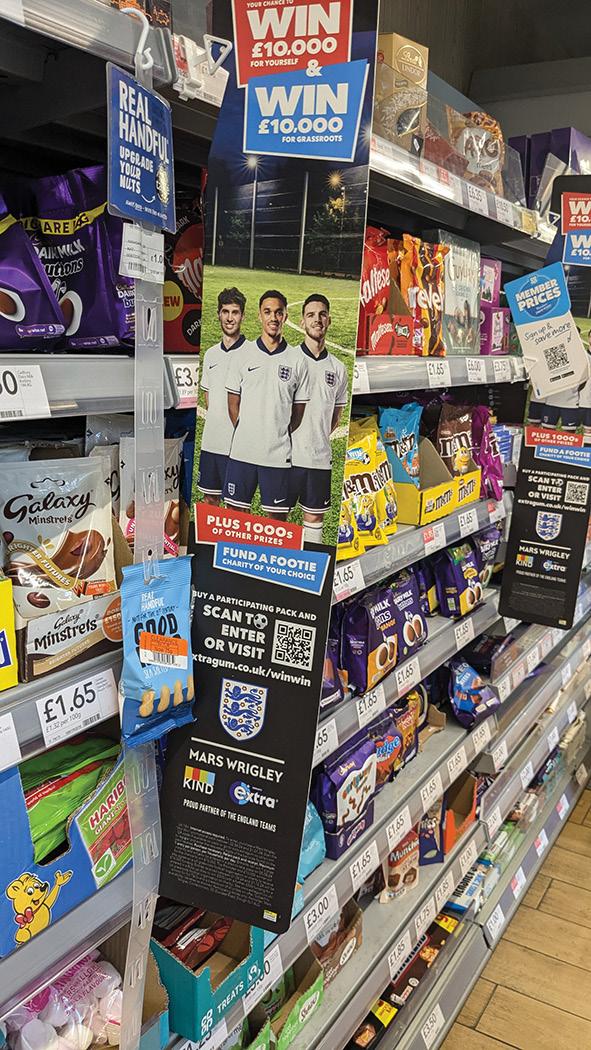
Sports sponsorships are so prevalent in the marketing world — and are a large chunk of big brands’ annual advertising budgets. It’s an old yet evergreen marketing tactic seen year-round, and arguably the biggest opportunity comes every four years on a global stage: the Summer Olympics.
The first brand deal actually dates back to the early 20th century. Coca-Cola — currently the Olympics’ longeststanding partner — signed on in 1928, and since then the marketing opportunity has only grown more lucrative.
According to Statista, the global sports sponsorship market exceeded 100 billion U.S. dollars in 2023 and is expected to almost double by 2030. One of the biggest regions for sports sponsorship is North America, but across the Atlantic, the European sports sponsorship market surpassed 20 billion euros in 2022 and continues to grow.
Here’s a sample of some of the activations we’ve spotted this year ...
BY JACQUELINE BARBA
1
Onsite during the Paris Olympics, P&G’s Pampers for the first time dedicated a comfortable nursery space for athlete parents to connect and play with their babies and young children in the Athletes’ Village, providing all Pampers diapering needs.
2
Global Olympic and Paralympic partner Procter & Gamble leveraged more than 30 brands, collaborated with 150-some retailers and tapped more than 100 athletes for in-store and online retail programs around the world before and during the Paris Games. The CPG giant partnered with American Olympic hurdler Grant Holloway to promote household brands (including Gain and Charmin) at Walgreens, the retailer’s fulfillment options and a special purchase incentive from his social media accounts.
3
Mars Wrigley UK again activated its sponsorship of England’s national soccer teams, this time making Extra gum the core brand focus (alongside Kind) of its 2024 campaign. A branded violator spotted at British retailer Co-op promoted a sweepstakes, inviting shoppers to purchase a special “Win Win” Extra pack (which features a unique bar code) to enter to win a grand prize of 10,000 pounds for themselves and for a U.K. grassroots soccer organization or charity.
4
During March Madness, Unilever activated its sponsorship of the NCAA men’s and women’s Final Fours by running a “#FullCourtFresh” sweepstakes with Walmart that awarded tickets to the games. A twotime NCAA champion, Grant Hill, invited consumers to

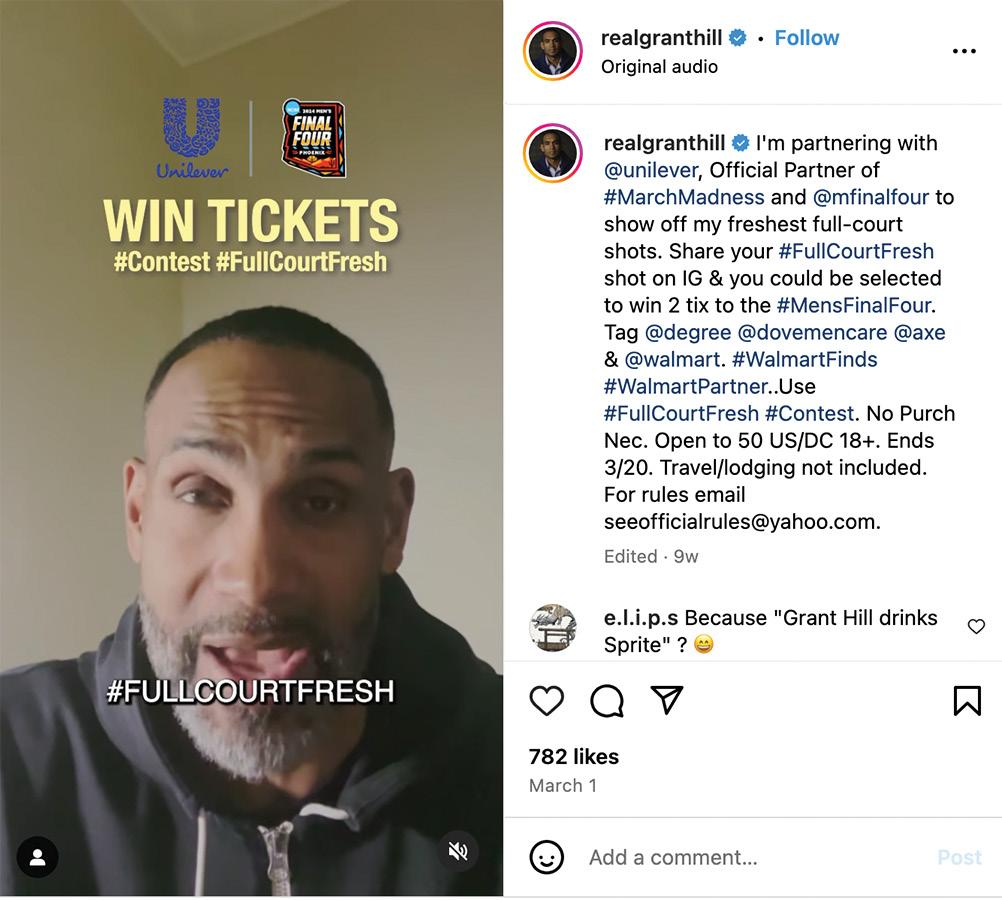


enter from March 1-20 by sharing a video of themselves making a full-court shot on Instagram and tagging Walmart, Degree, Dove Men+Care and Axe.
5
Kroger activated its primary sponsorship of NASCAR Cup Series team JTG Daugherty Racing in stores earlier this year with an “Everyday Essentials” floorstand that was co-marketed and stocked with products from vendor partners Tylenol, Band-Aid and Neutrogena (owned by Kenvue).
6
The Hershey Co.’s Reese’s, an Olympic sponsor, launched its first-ever seasonal shape for summer. For a limited-time ahead of the Paris Games, the product resembles a medal. A slew of activity across retailers and touchpoints debuted a “Legends vs. Newcomers” campaign in partnership with seasoned Team USA veterans and newbies. On social media, paid ads from athletes’ own accounts (and Reese’s)

promoted the treat and disclosed their unexpected facts and stories.
7
Coca-Cola leveraged its sponsorship of the NFL’s Baltimore Ravens with a commanding themed cooler display near checkout at Walmart stores in Michigan. The display featured purple and white illumination, the team’s logo and aerial images of M&T Bank Stadium (home of the Ravens) on the sides.
8
Michelob Ultra, Official beer sponsor of the 2024 CONMEBOL Copa America international men’s soccer tournament and the Mexico men’s national team, activated at retailers in all 14 U.S. host cities throughout the tournament. Spotted at Busch’s Fresh Food Market in Michigan, case stacks and a standee promoted Michelob Ultra’s “Superior Access” campaign and invited shoppers to scan a QR code for a chance to win prizes, including tickets to Copa America matches.
BY SAMANTHA NELSON
Hain Celestial Group had its line of Garden Veggie Flavor Burst tortilla chips launch in February with an omnichannel campaign of instore displays and an exclusive package at Walmart.
The gluten-free nacho cheese and zesty ranch flavored chips are sold in 6- and 10-ounce packages, with Walmart also receiving an exclusive 12-ounce bag. Walmart stocked the SKUs on a pallet display, endcap and power wing using a “Let Your Taste Buds Discover” message. The Garden Veggie Flavor Burst line is part of Hain’s Sensible Portions brand, which includes Garden Veggie Straws and Puffs.
“For Walmart, we built our Flavor Burst business around our existing Veggie Straws business,” said Ed Kaiser, Hain Celestial senior director of marketing. “This allows us to display the entire line together at a common price point. We’ve had success building a large size strategy overall as consumers look for additional value in the snacks they buy.”
The Walmart launch was supported with onsite and off-site media buys, a $1 off Ibotta deal and social media activity. The target consumer was households with kids under age 12 looking for better-for-you snacks the whole family could enjoy.
“Walmart has been a fantastic partner for us,” Kaiser said. “We worked together to defi ne the right search and media plans, in-store POS, social media amplification and more.”
The launch coincided with new planogram schedules for key retailers, but Hain Celestial also worked with Kroger and Albertsons to secure secondary placements ahead of the in-aisle resets. The Kroger launch was supported by on-site media. At Albertsons, SmartSource shelf talkers

used QR codes to deliver a $1 coupon through the retailer’s loyalty app.
Hain also worked with agency Clever(ish) Marketing to support the launch across digital and social media and with OOH activity, which included LED trucks and sampling in New Jersey and New York.
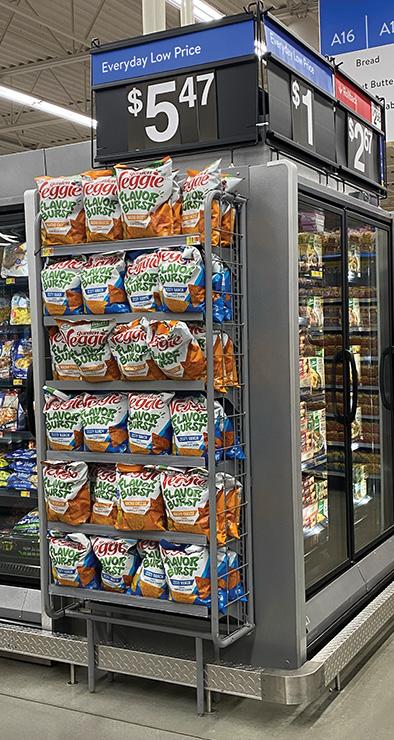
We’ve had success building a large size strategy overall as consumers look for additional value in the snacks they buy.
— Ed Kaiser, Hain Celestial Group

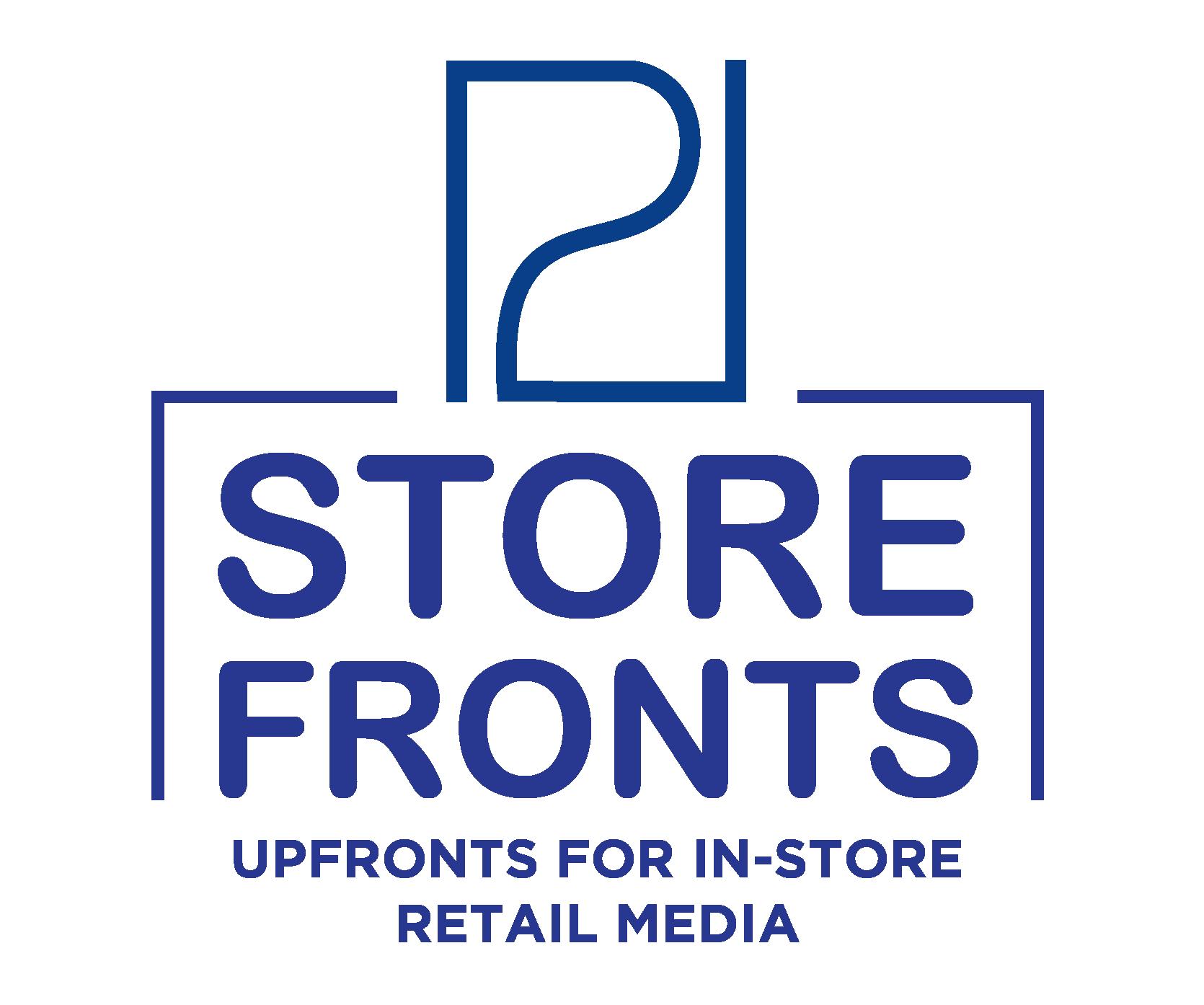























20 years ago, pep filled a void in the marketing services space. today, we are an industry leader in consumer activations, and the only partner who combines planning, sourcing, execution, creative, & technology into effective solutions for our clients. custom solutions that drive
our mission our expertise










mobile rebates FSIs rewards loyalty programs API builds & microsites influencer
asset management AR/VR/QR Codes displays in-store signage sales kits gifts with purchase campaigns sampling experiential & events premiums fulfillment
our longstanding partnerships
































































